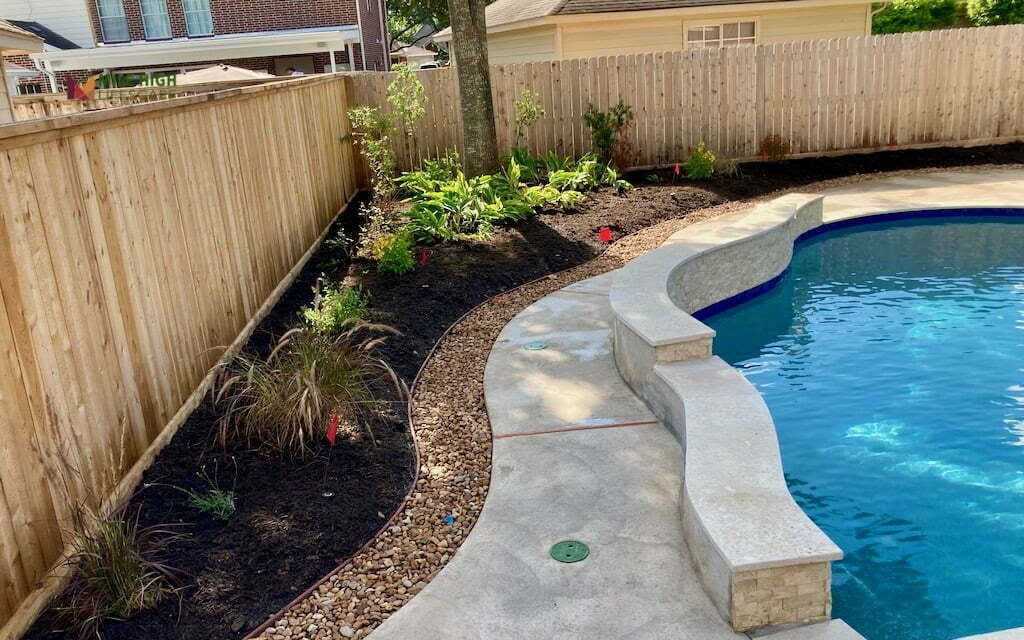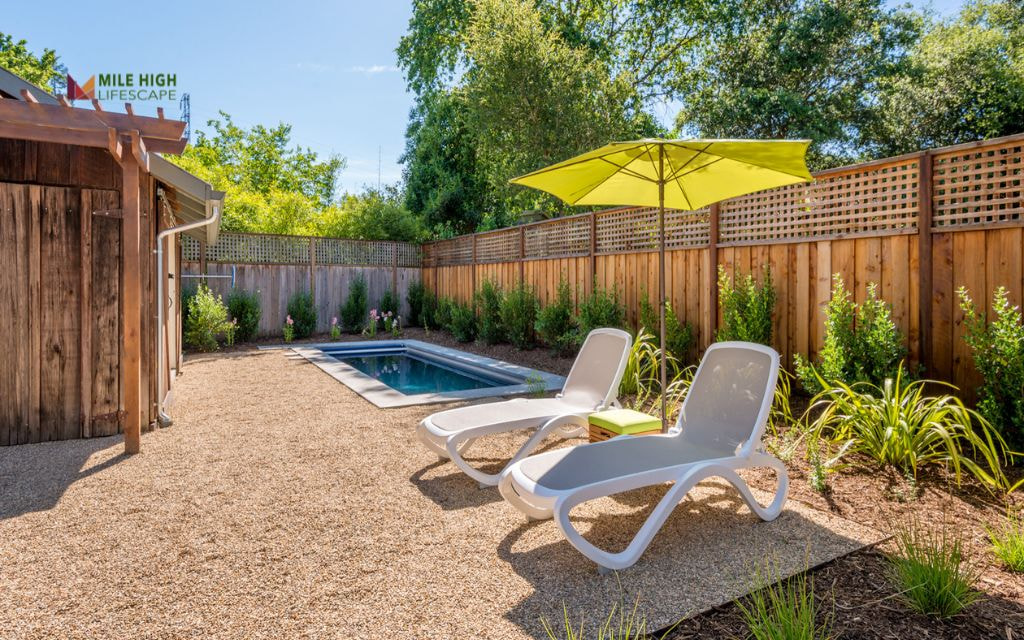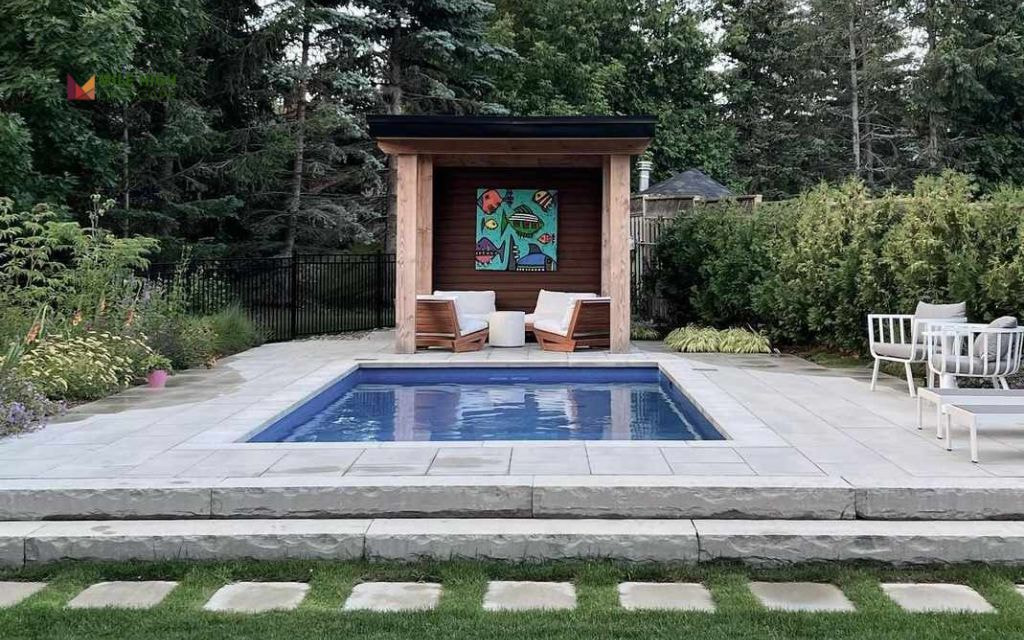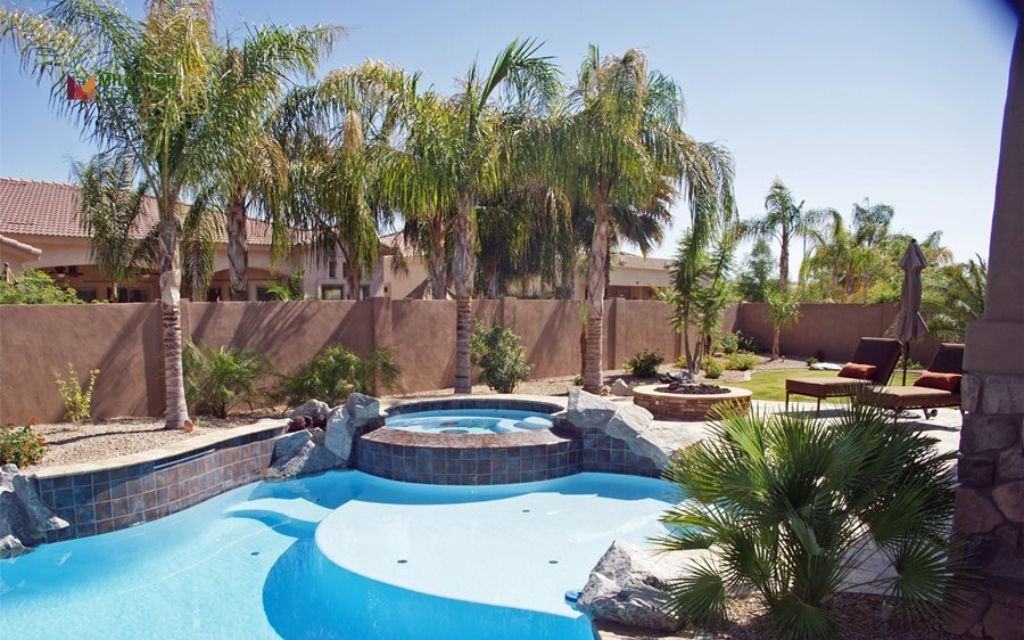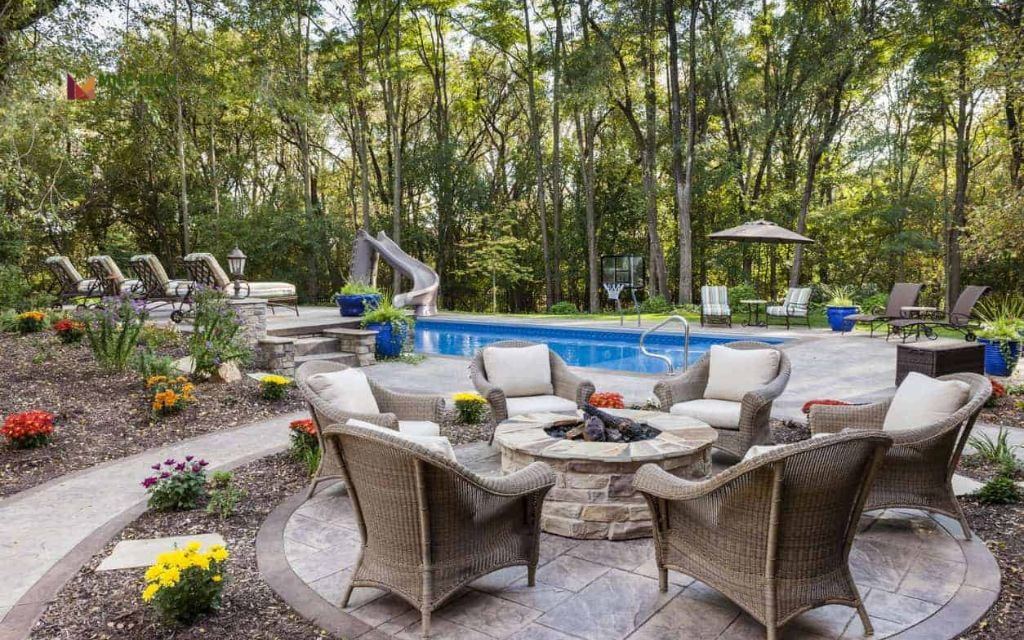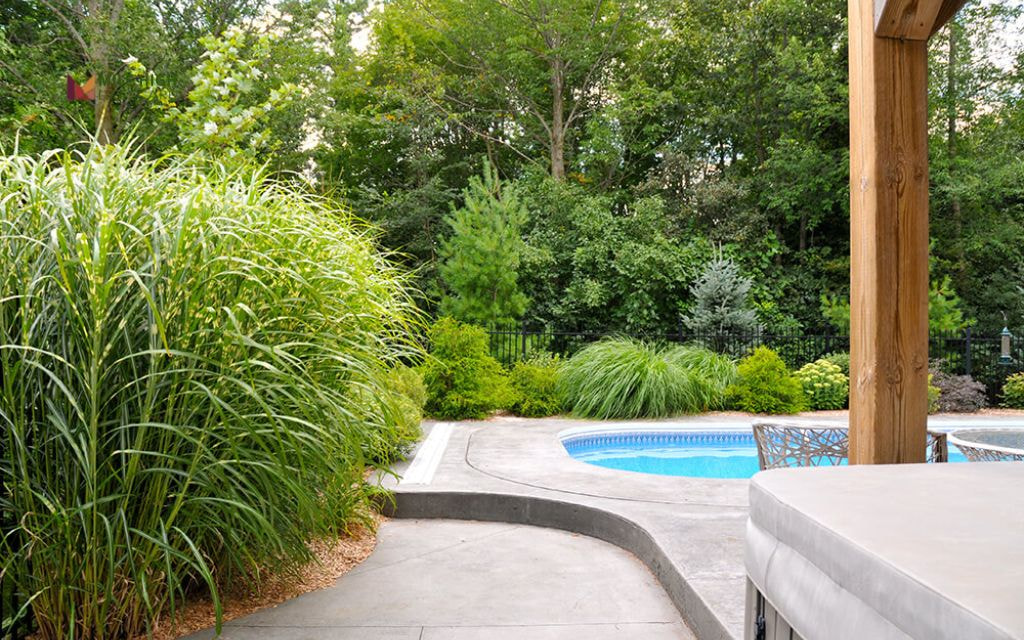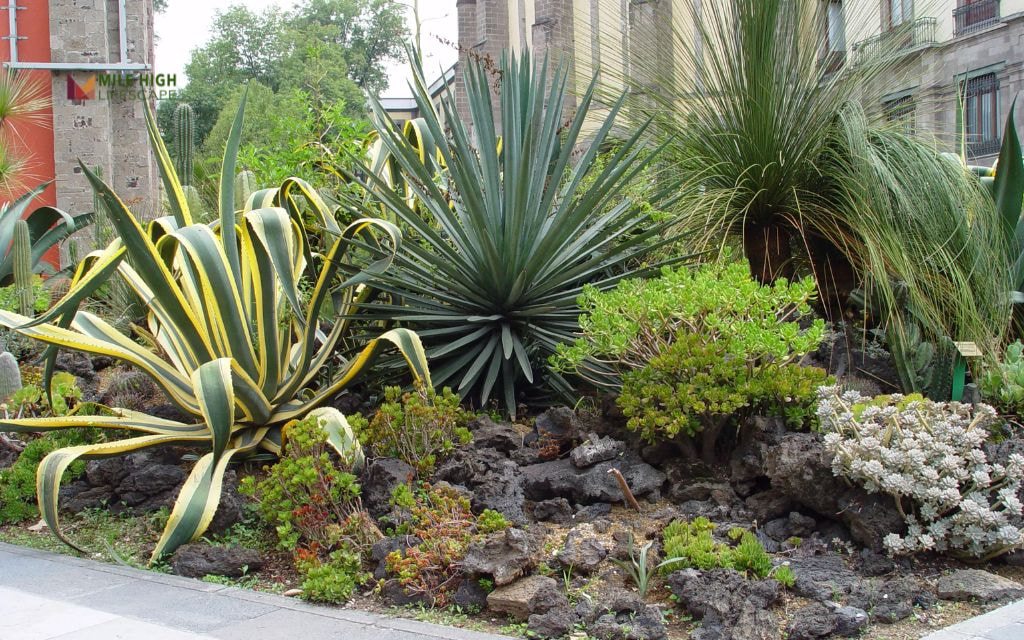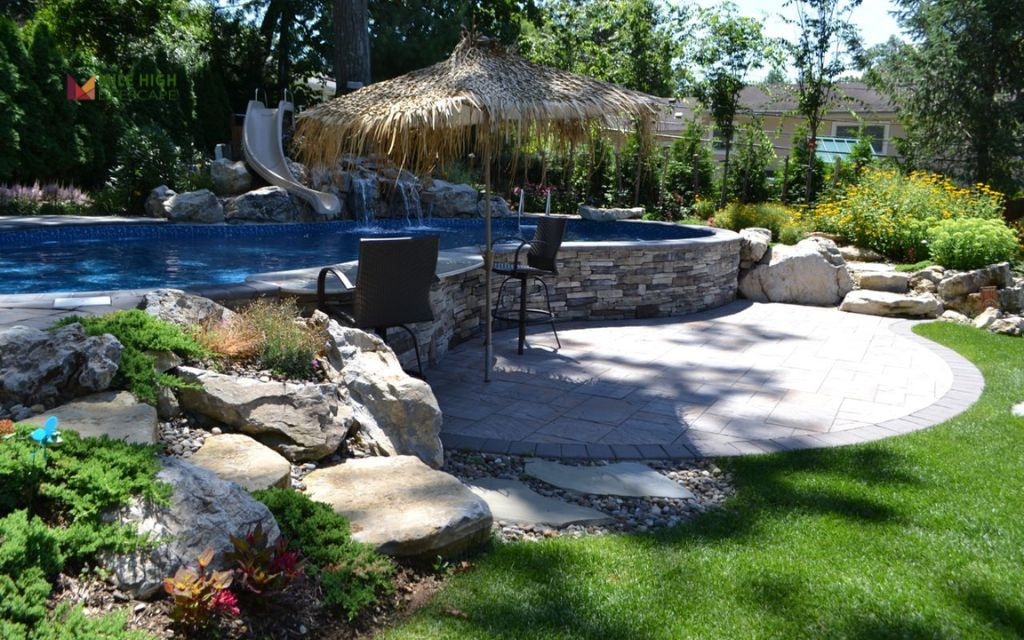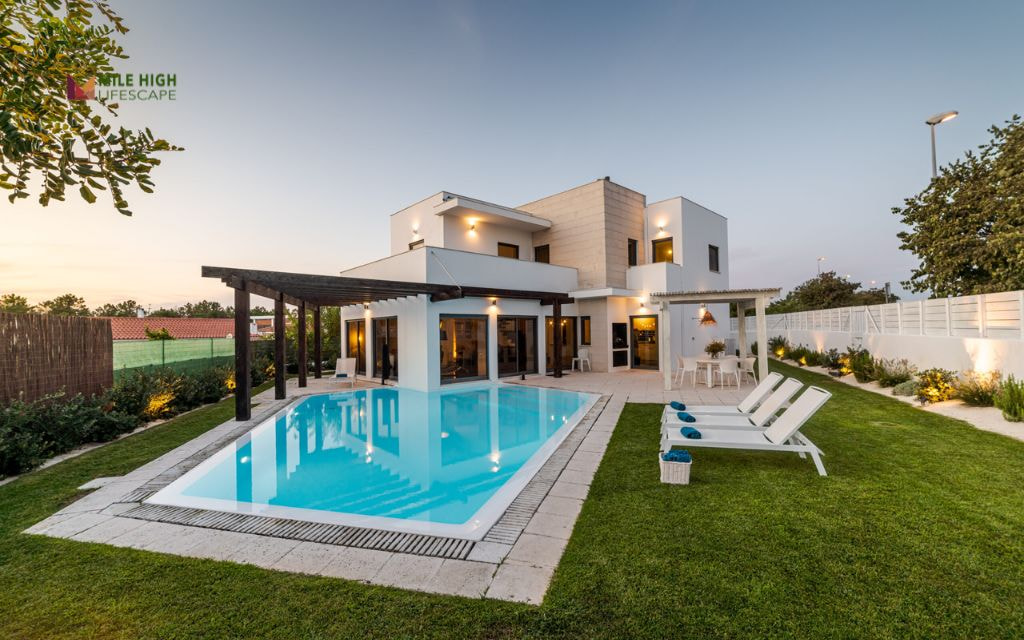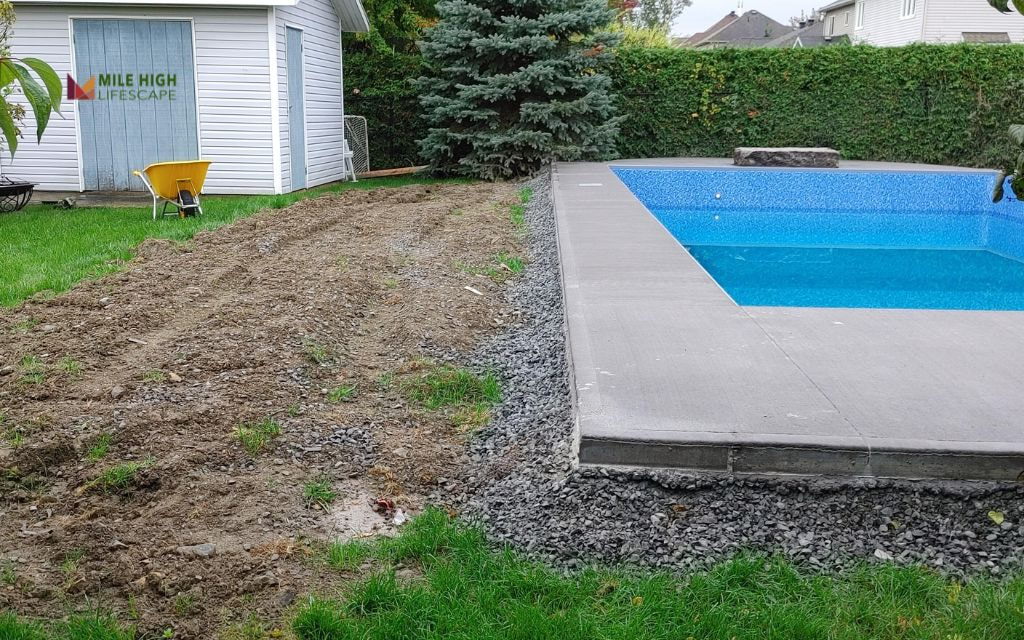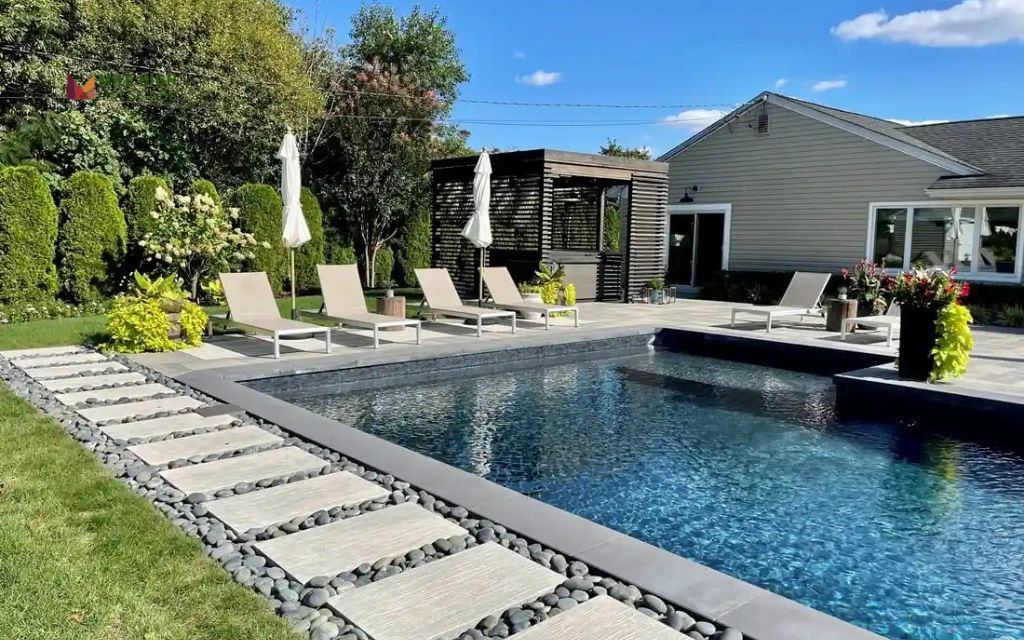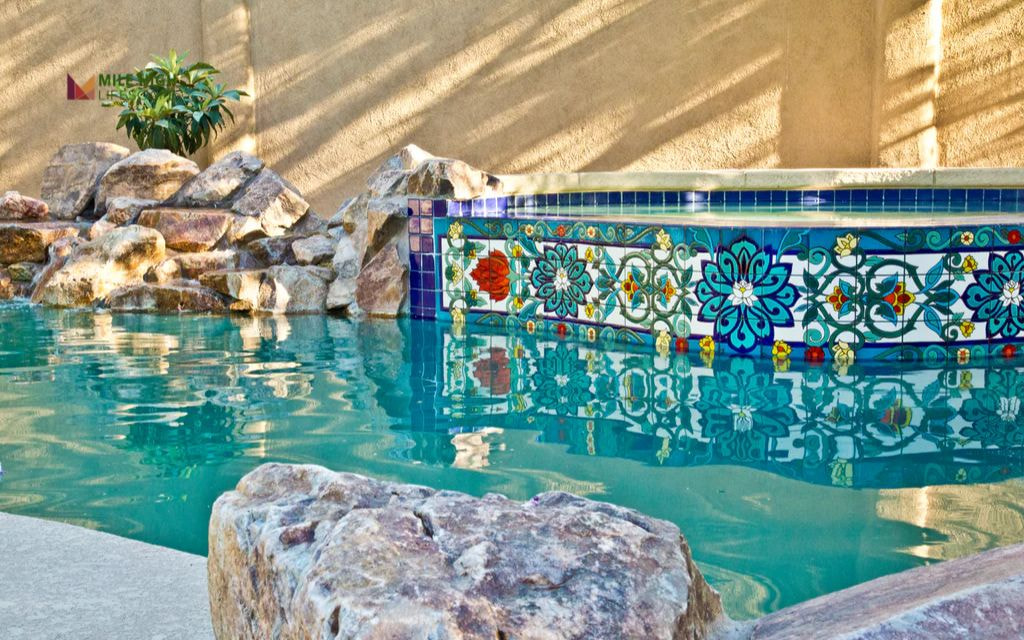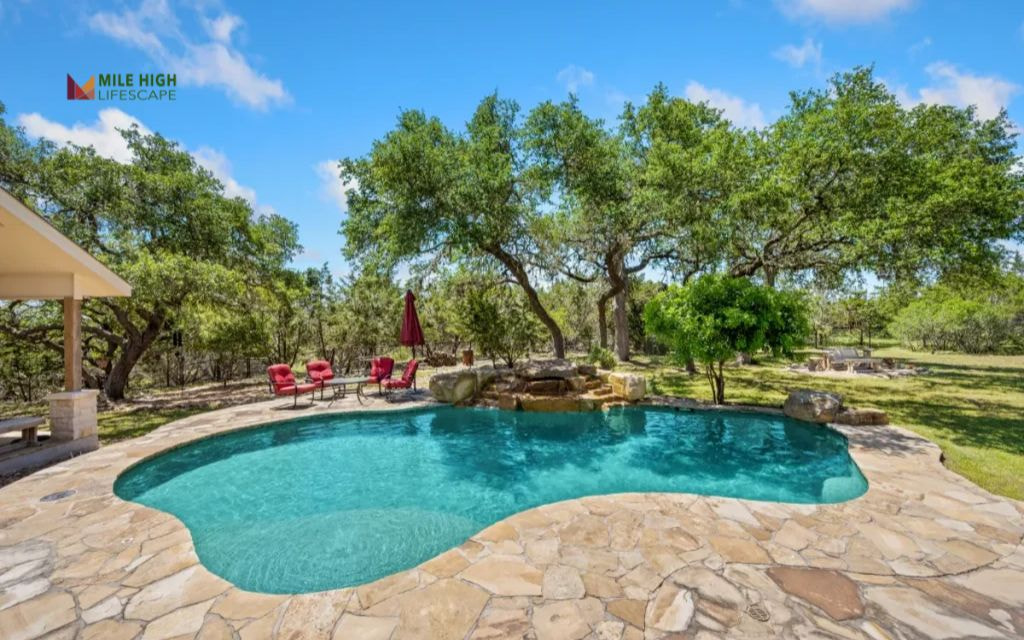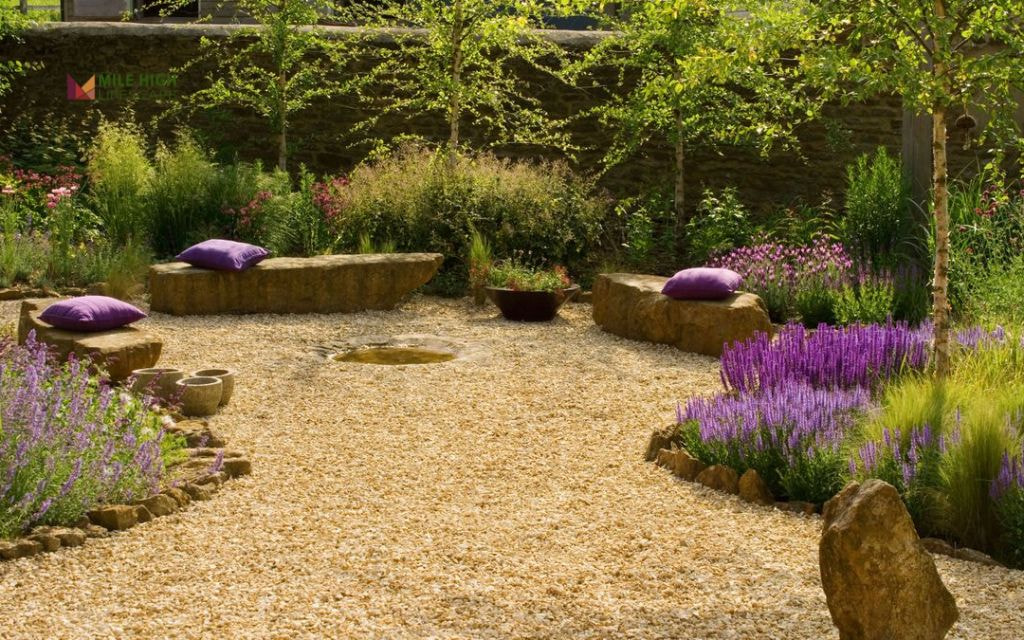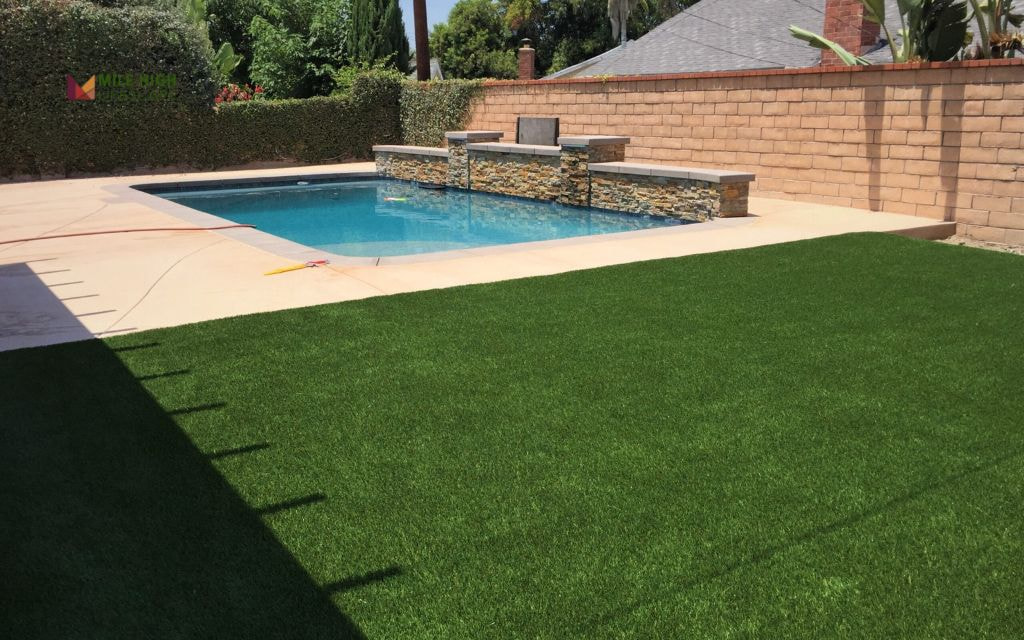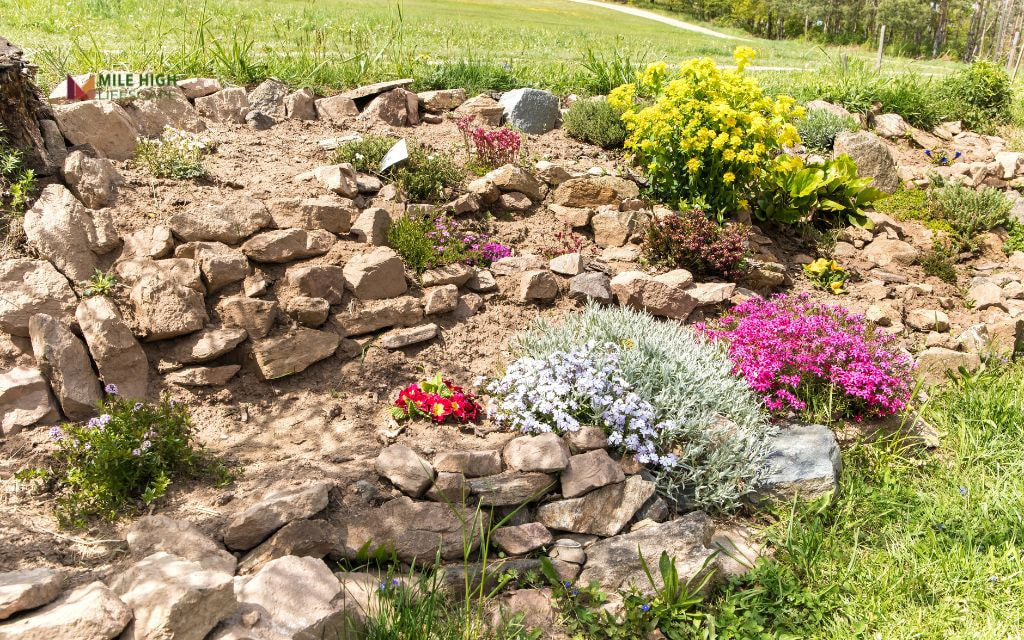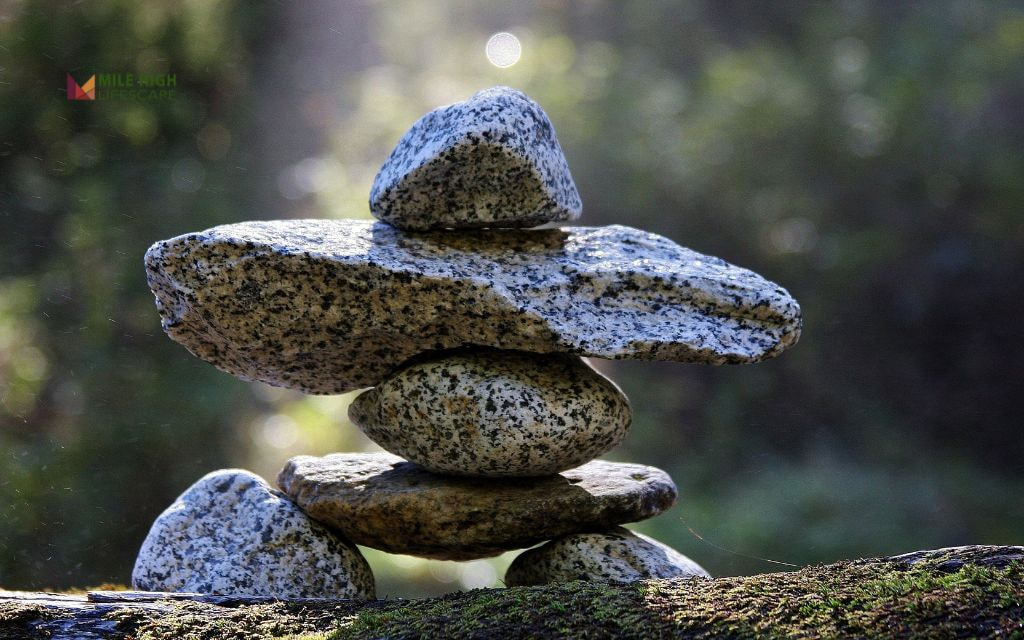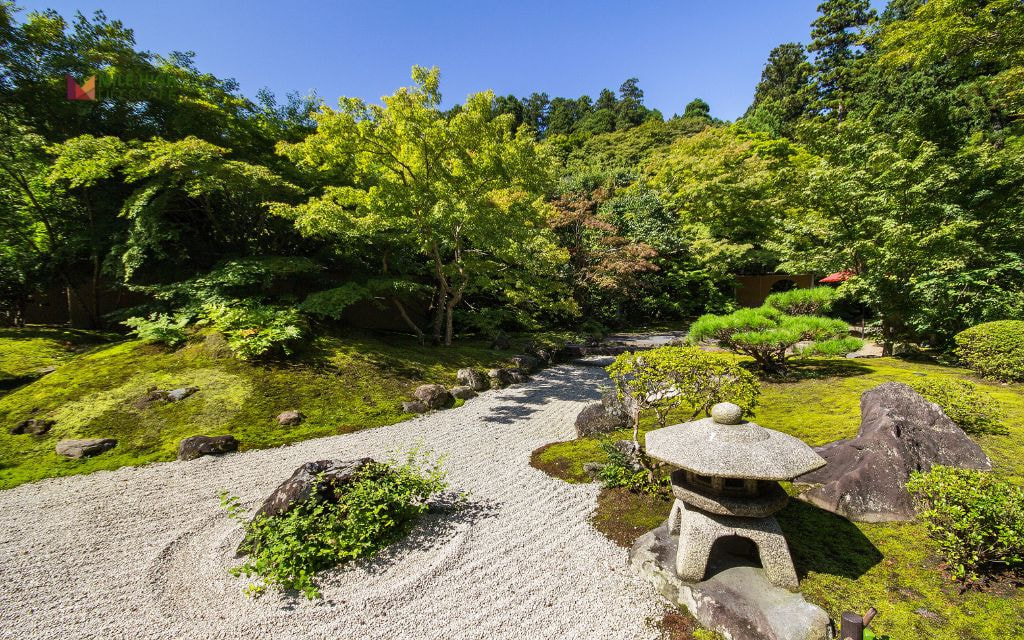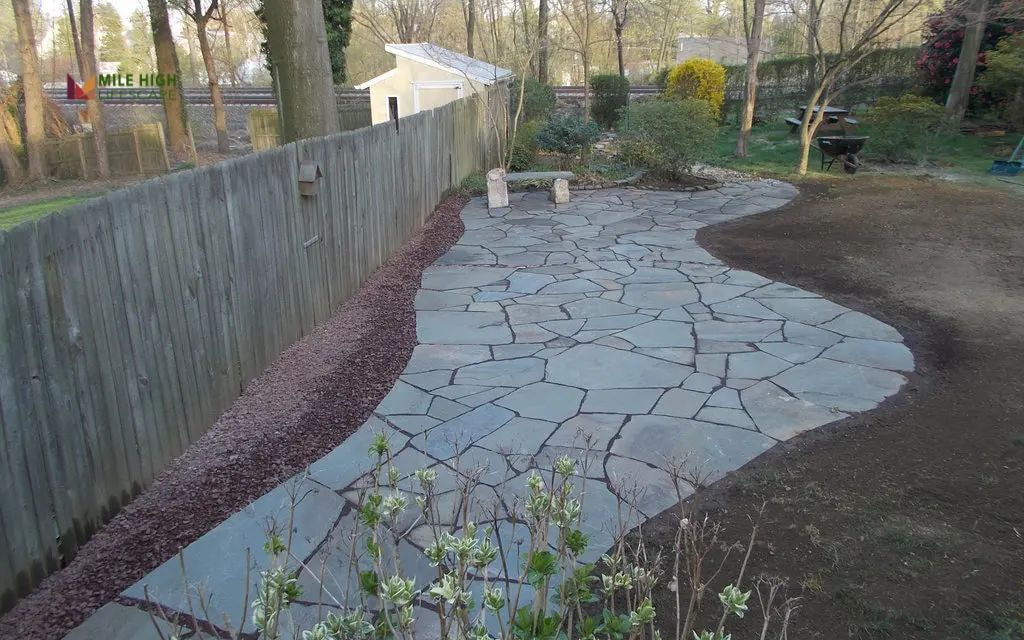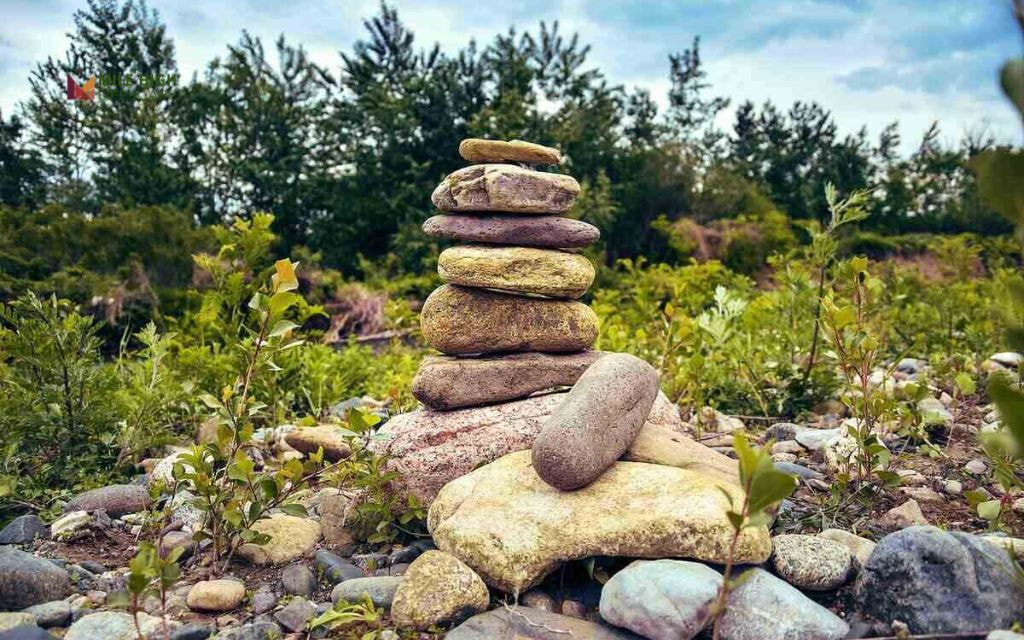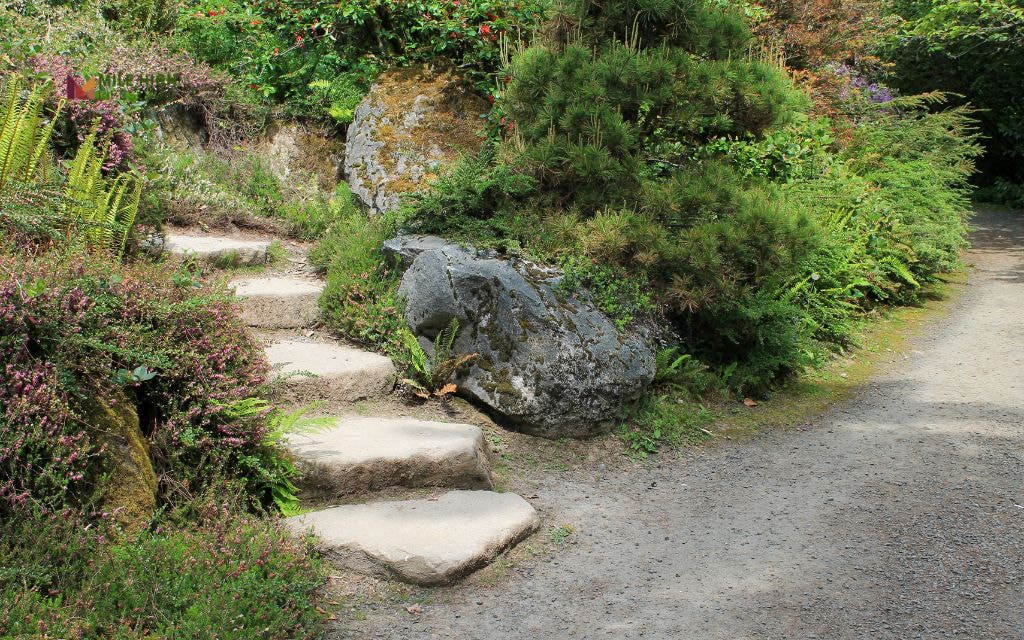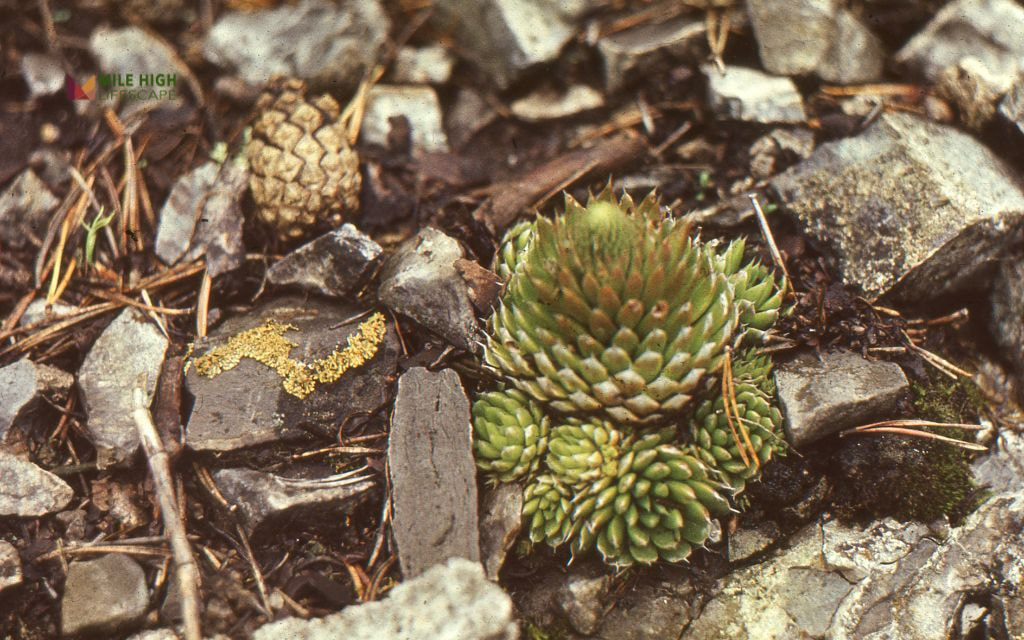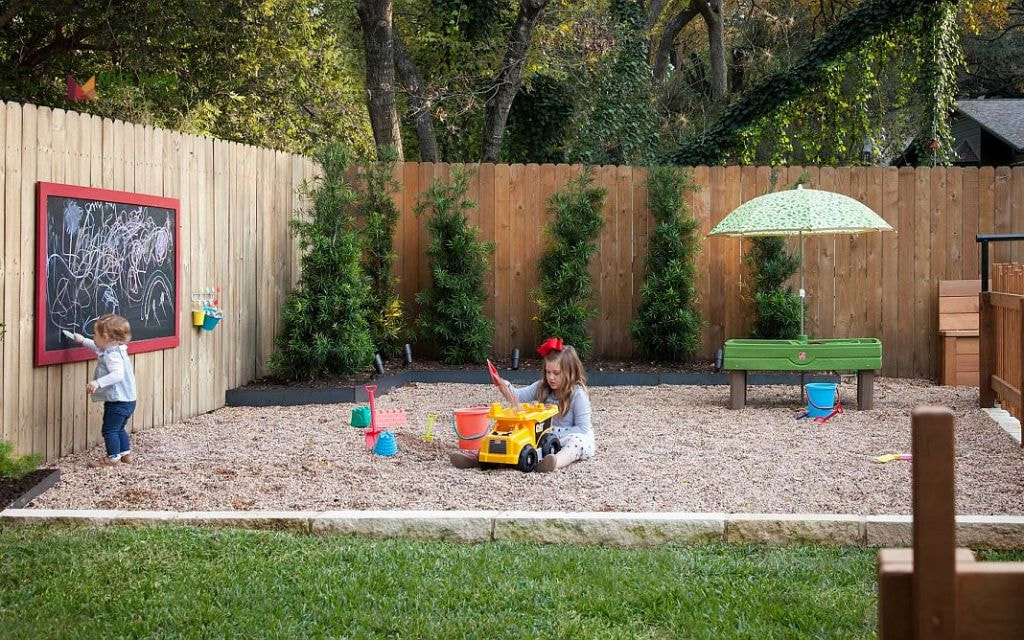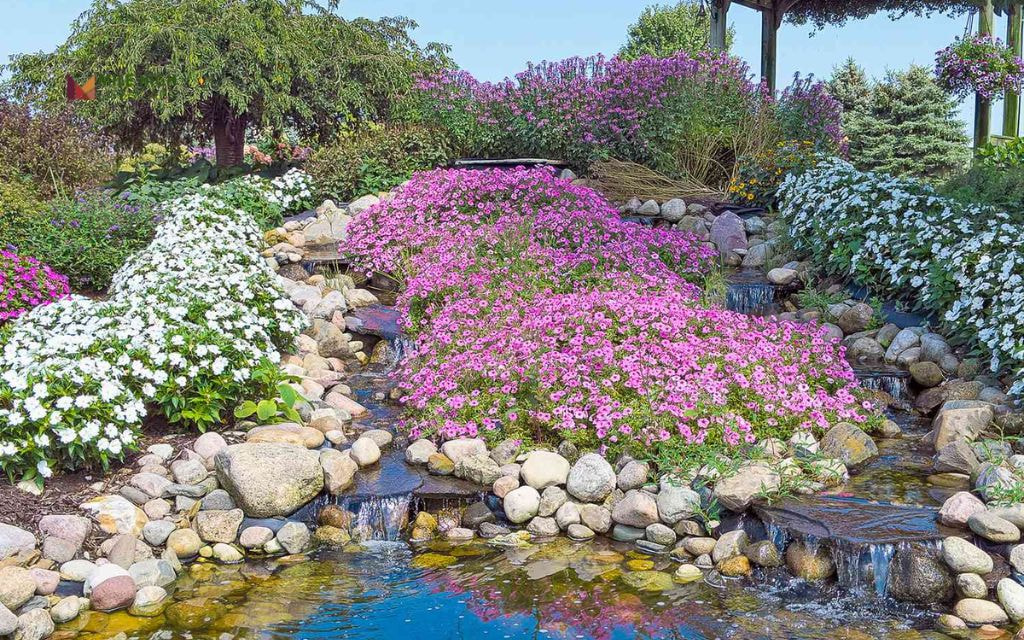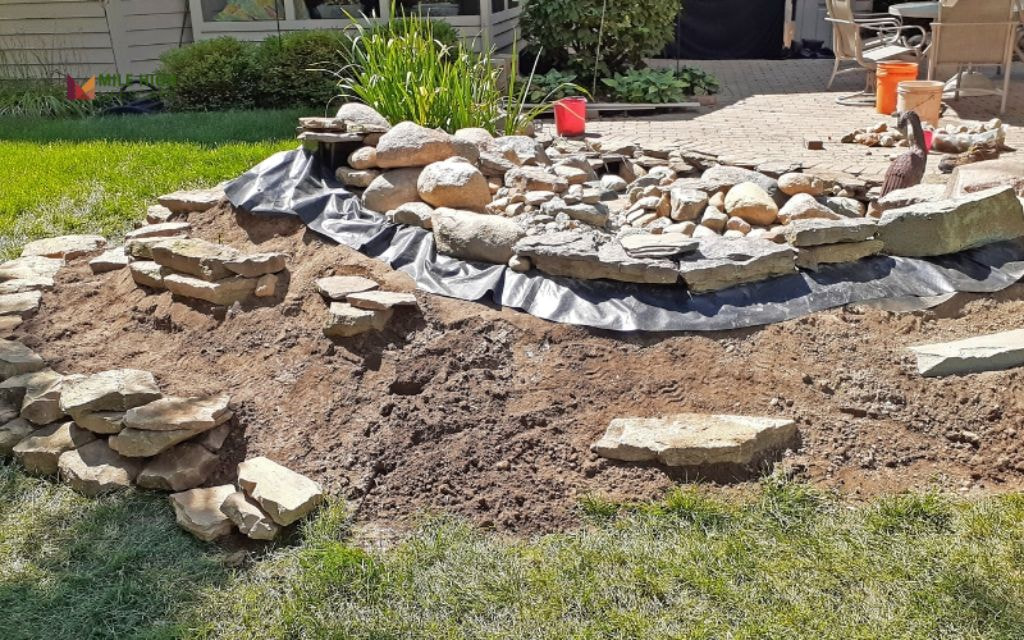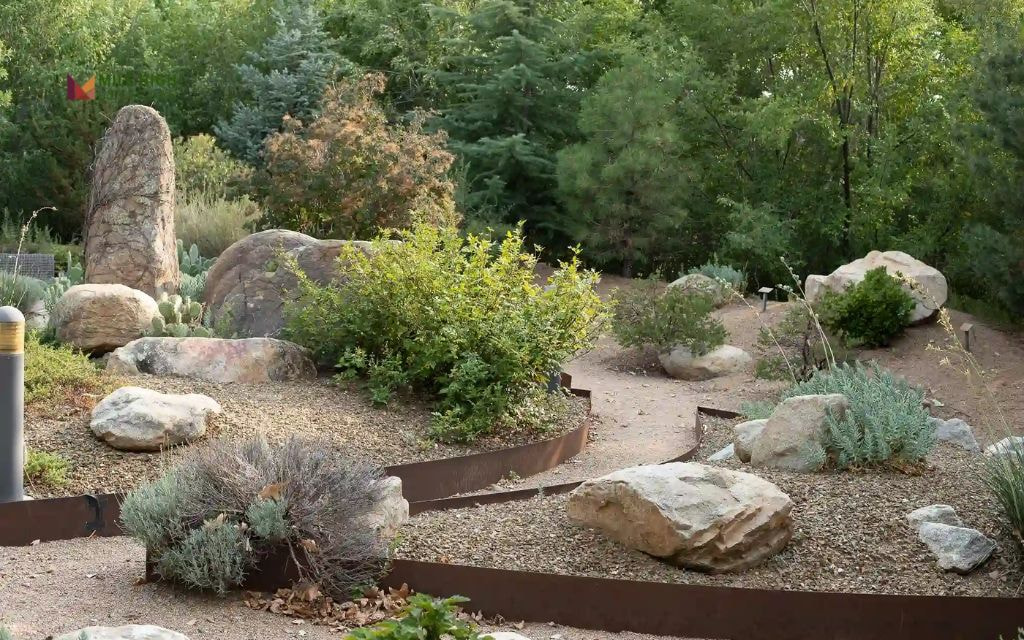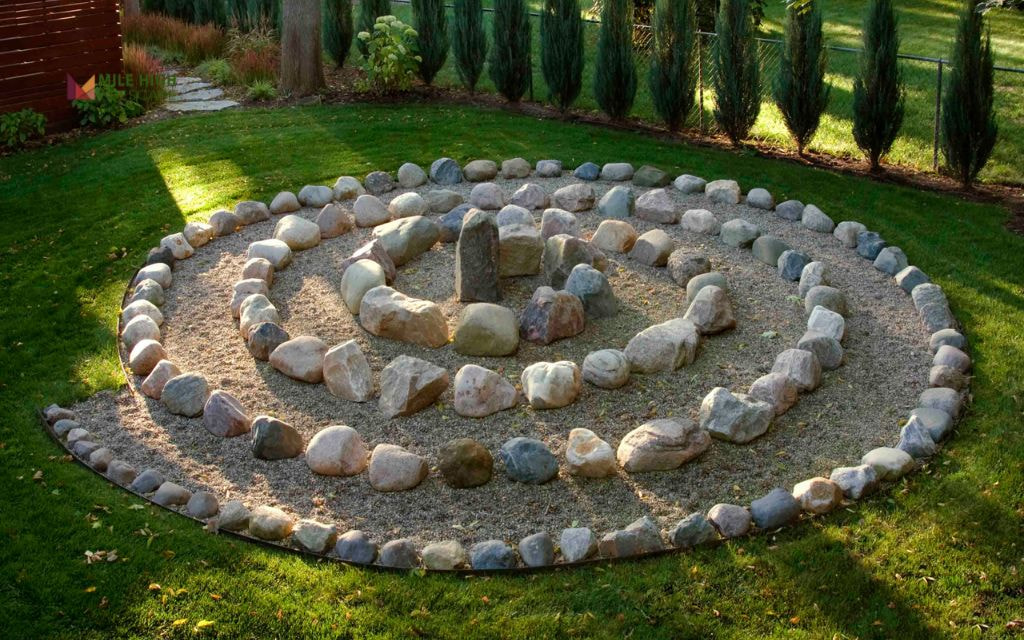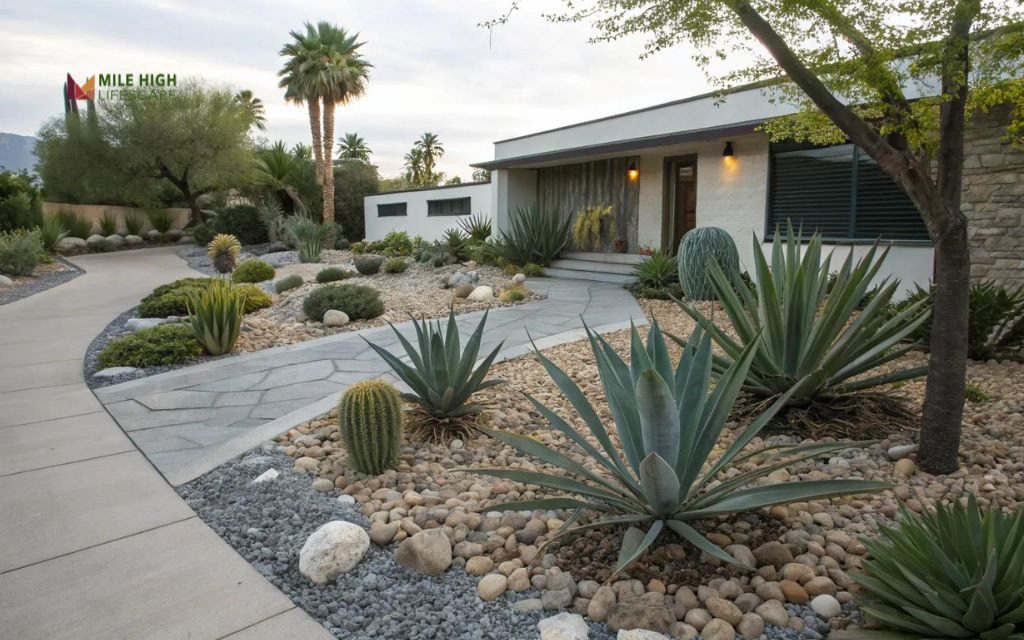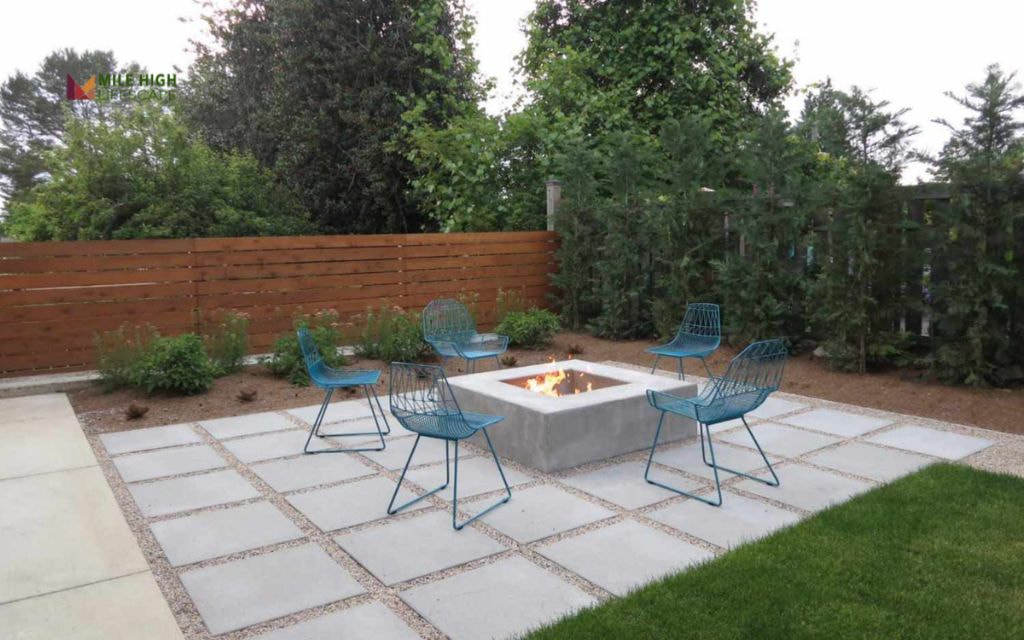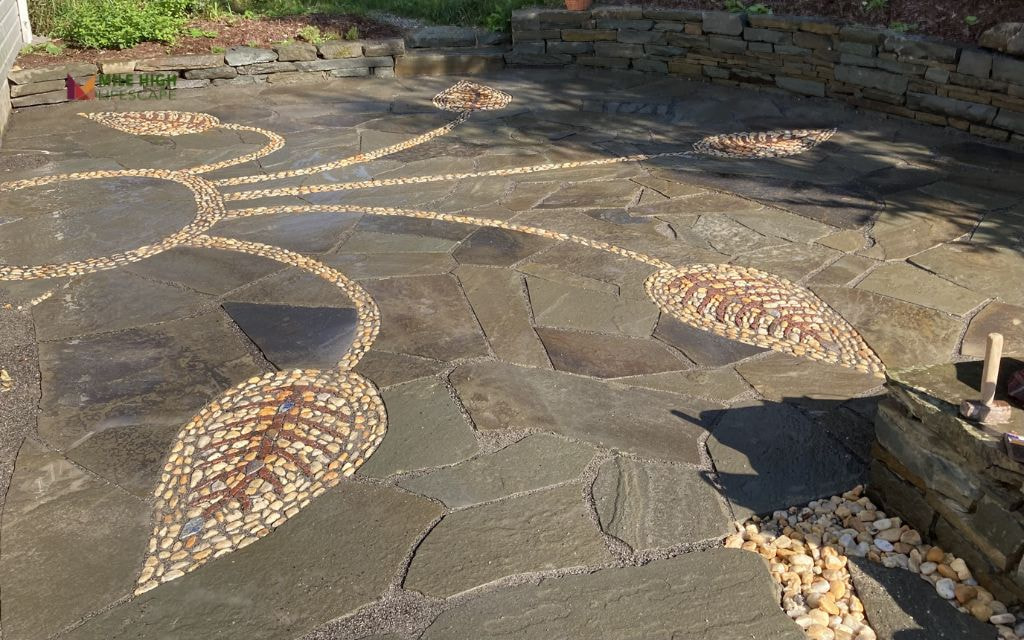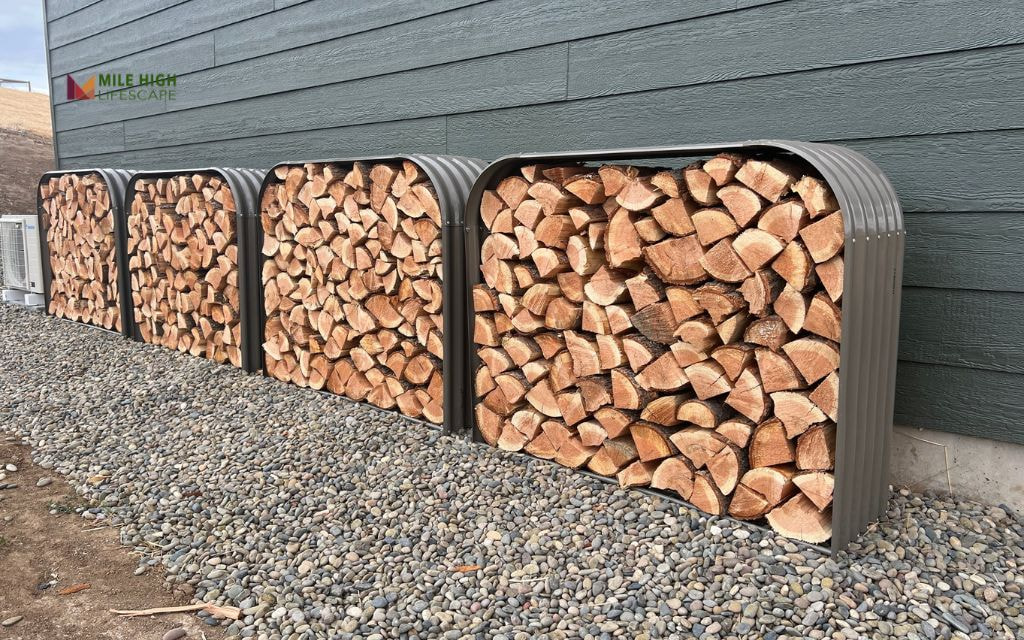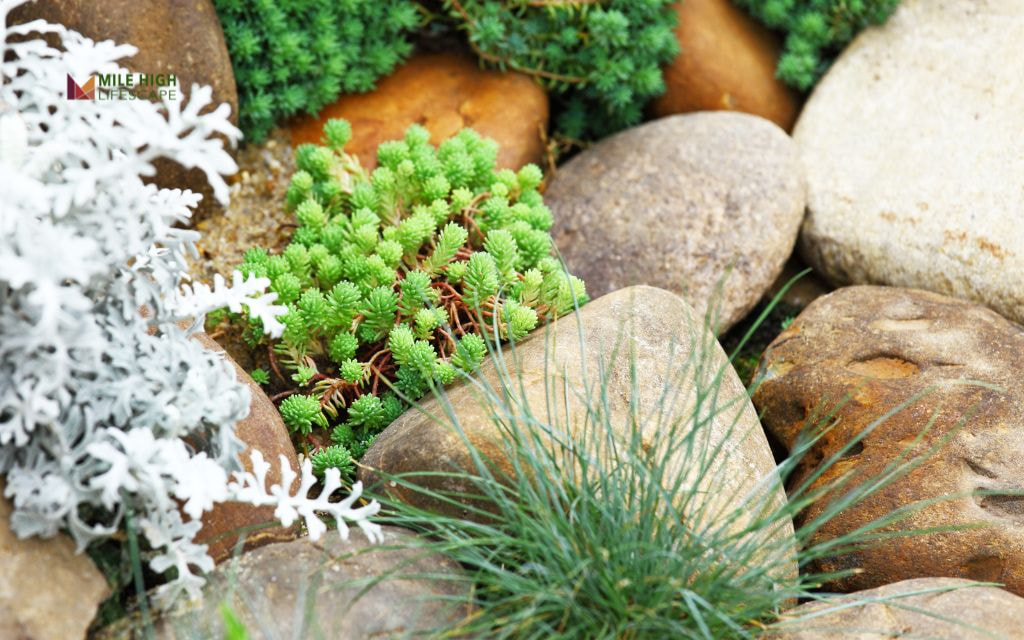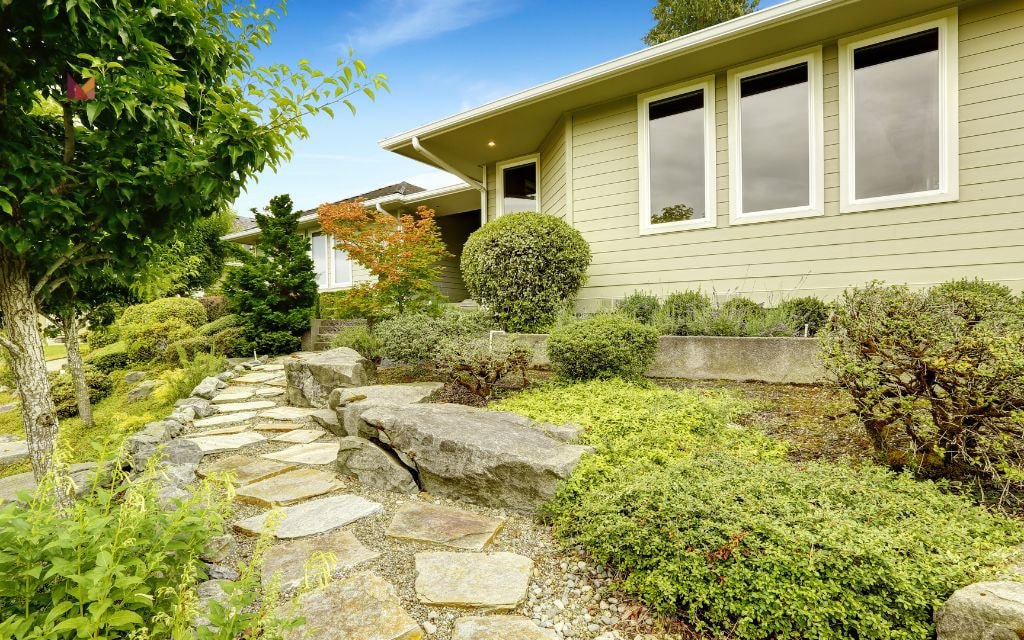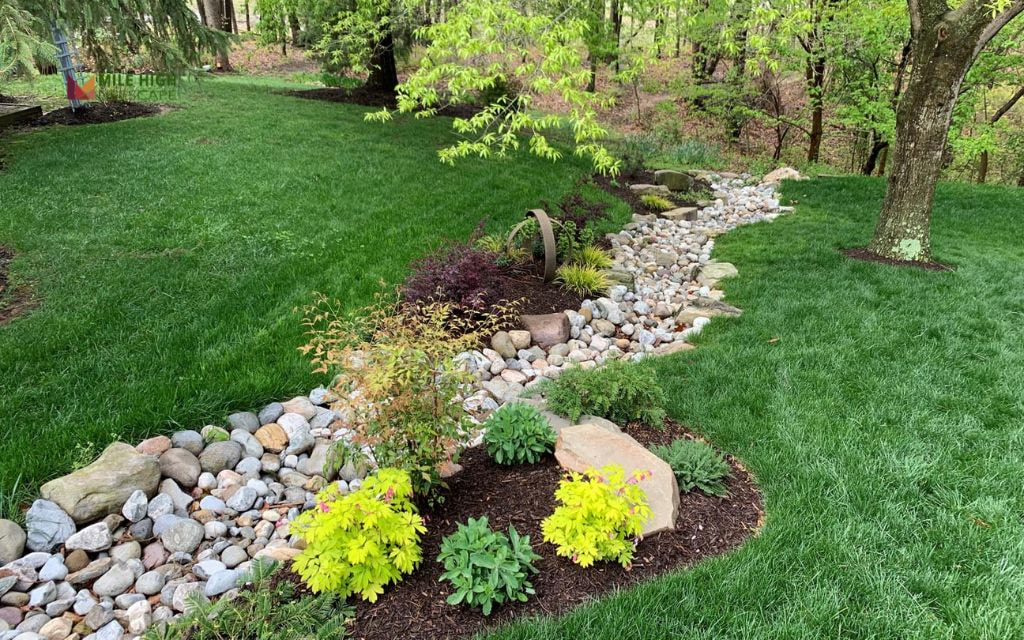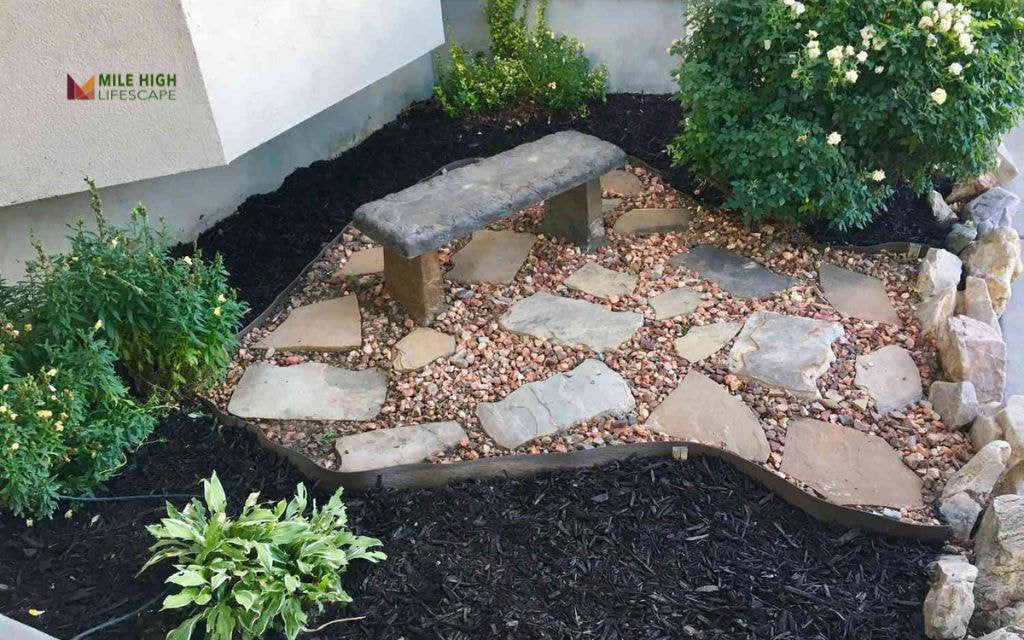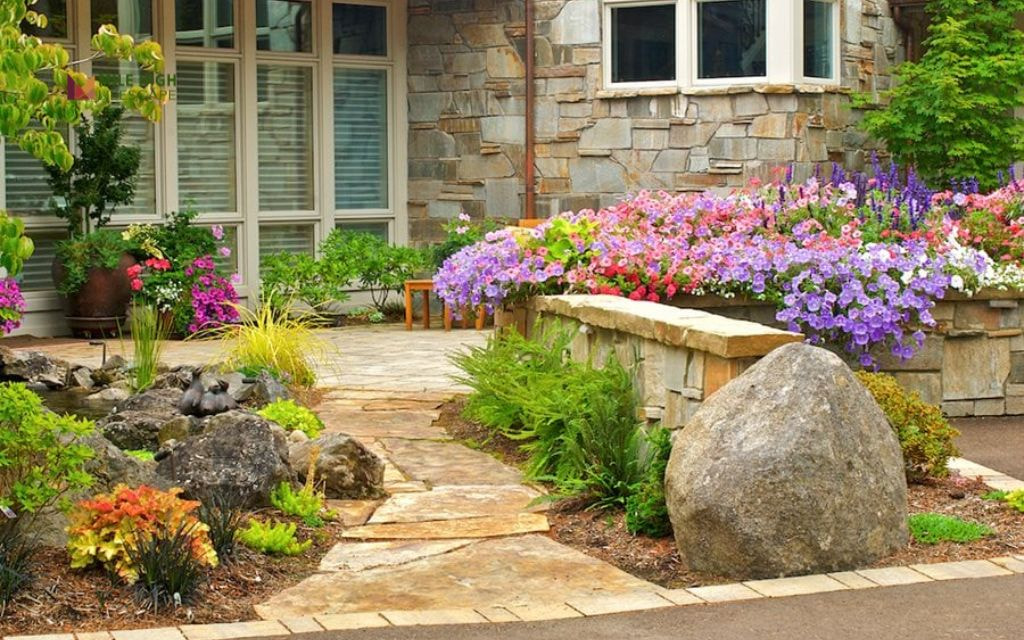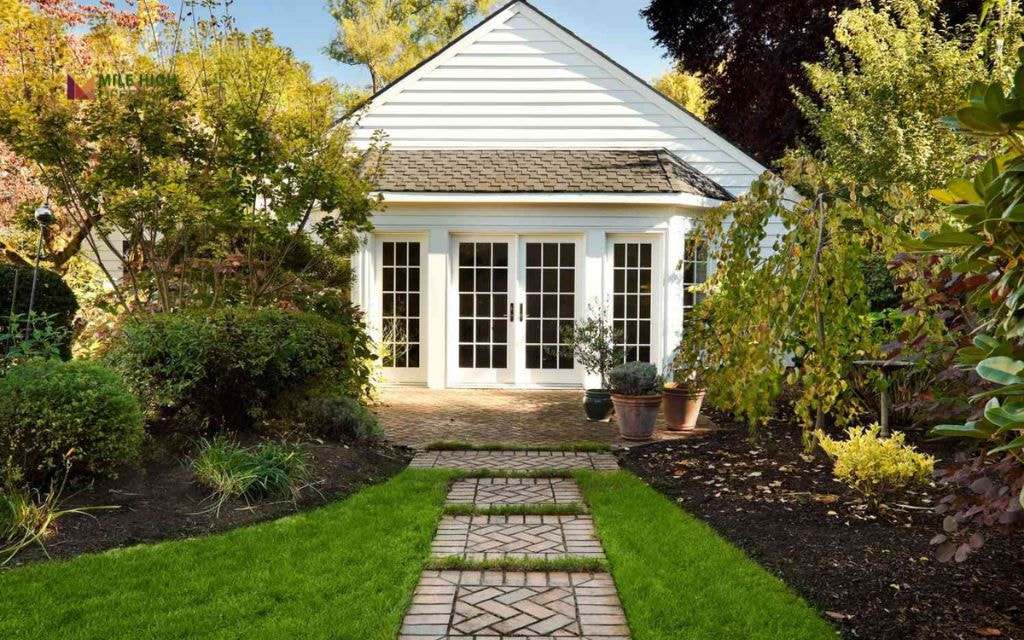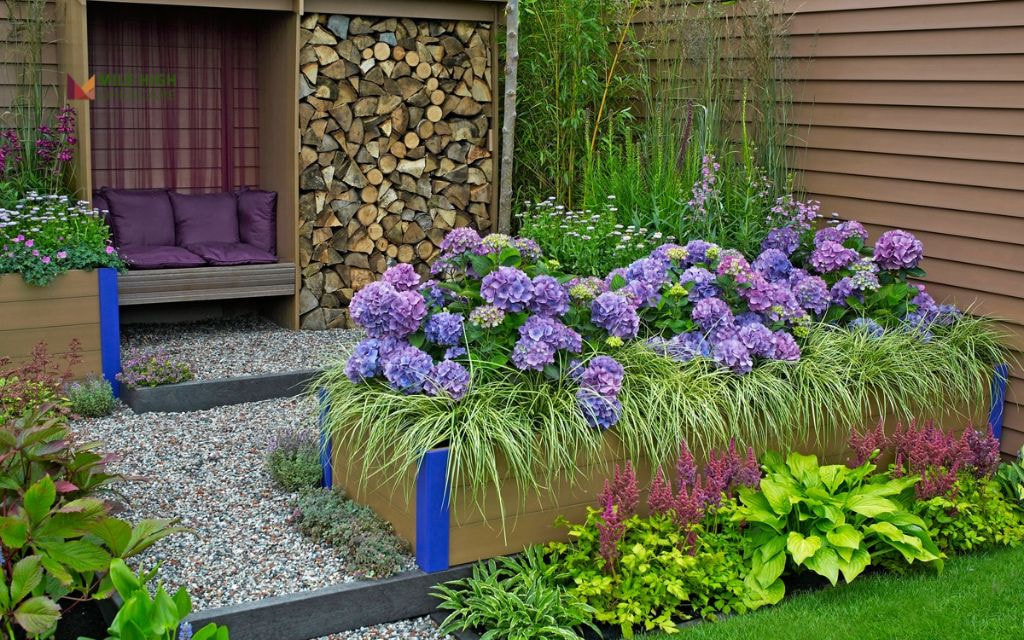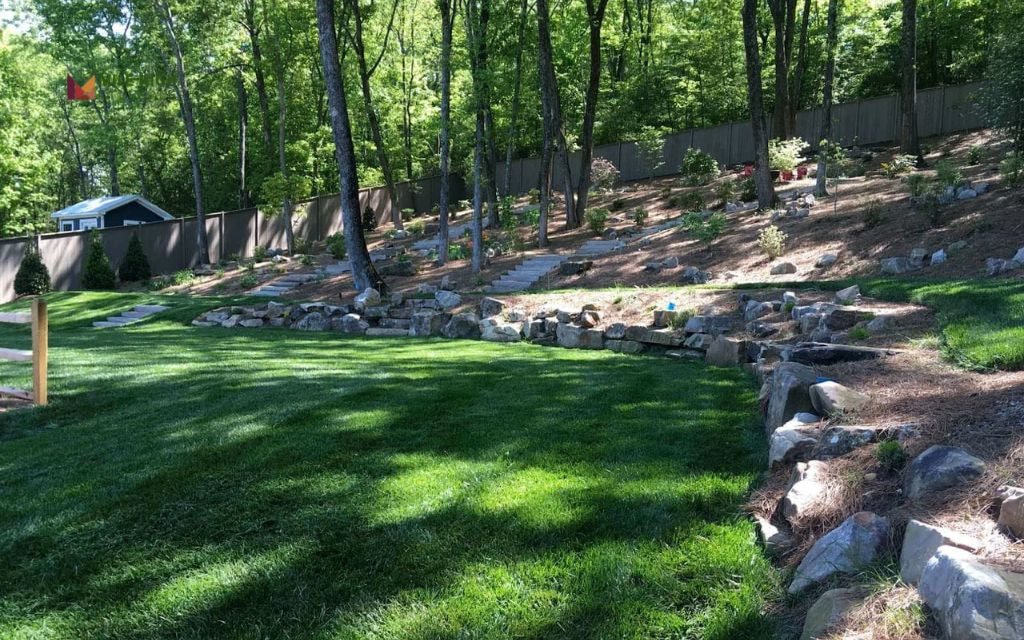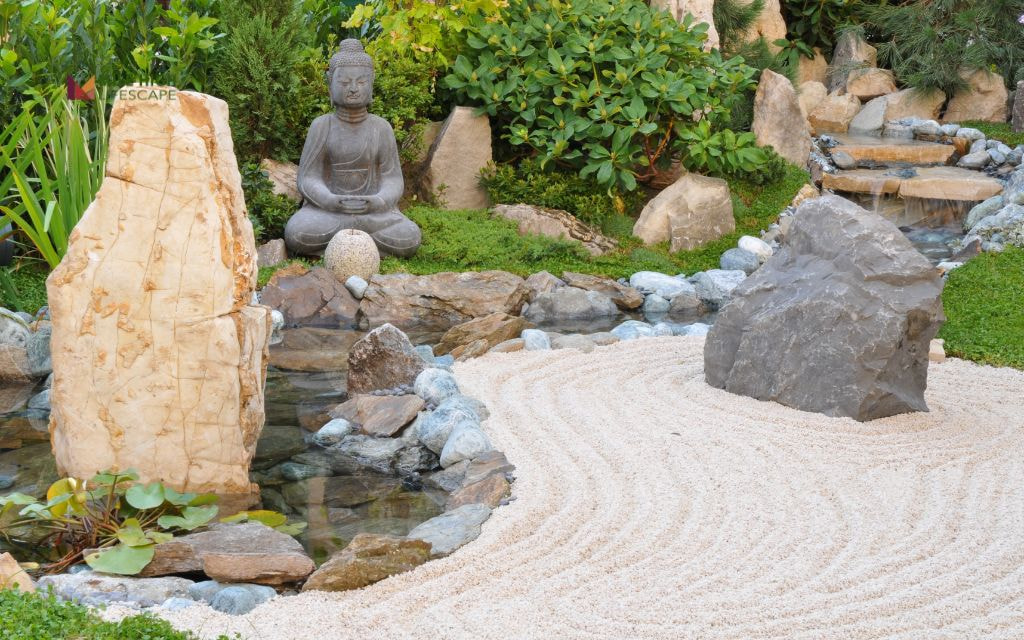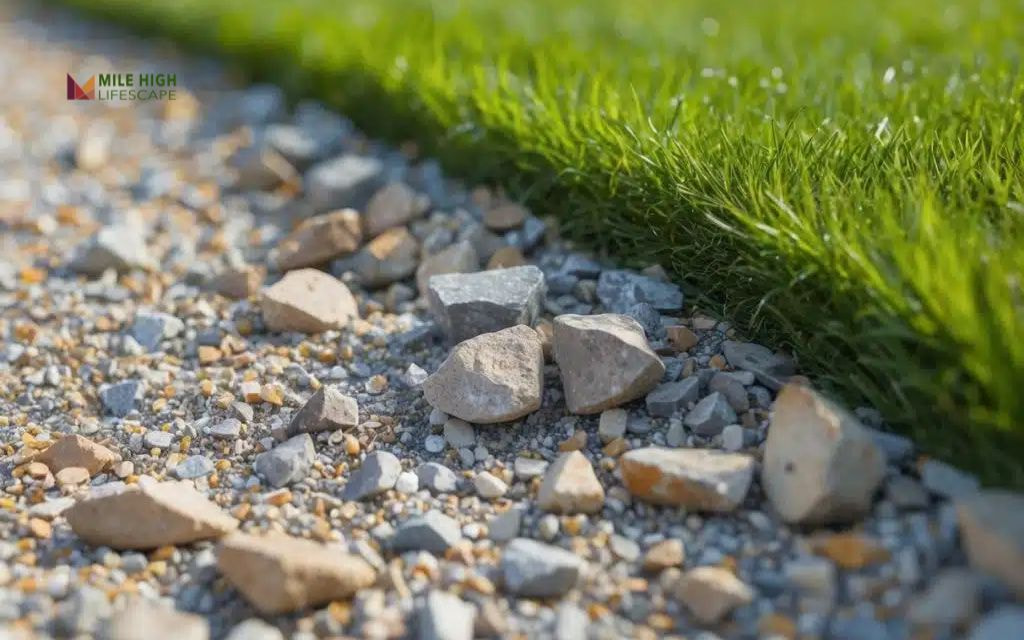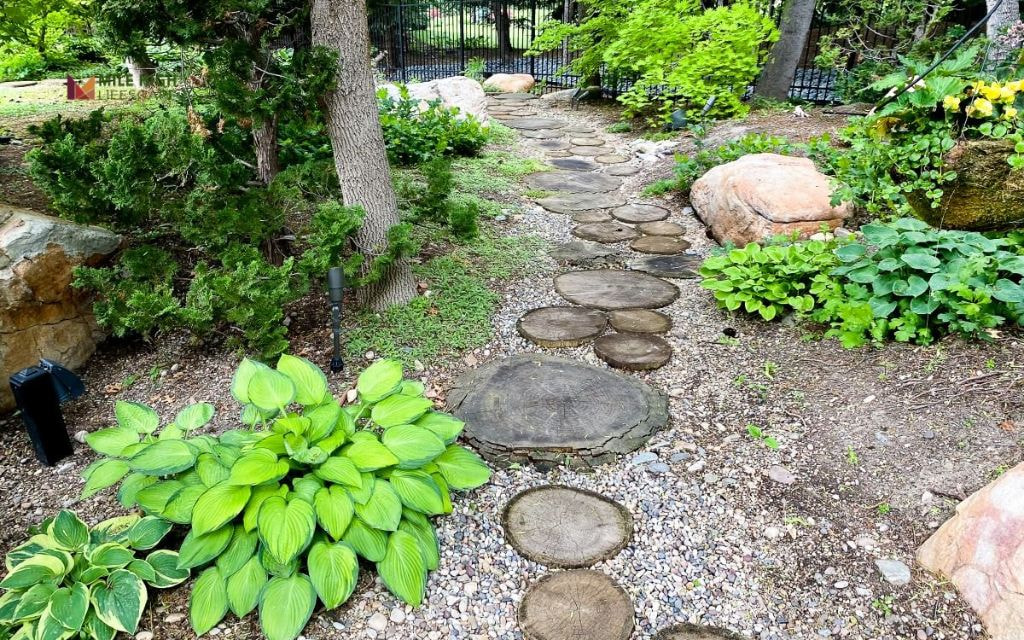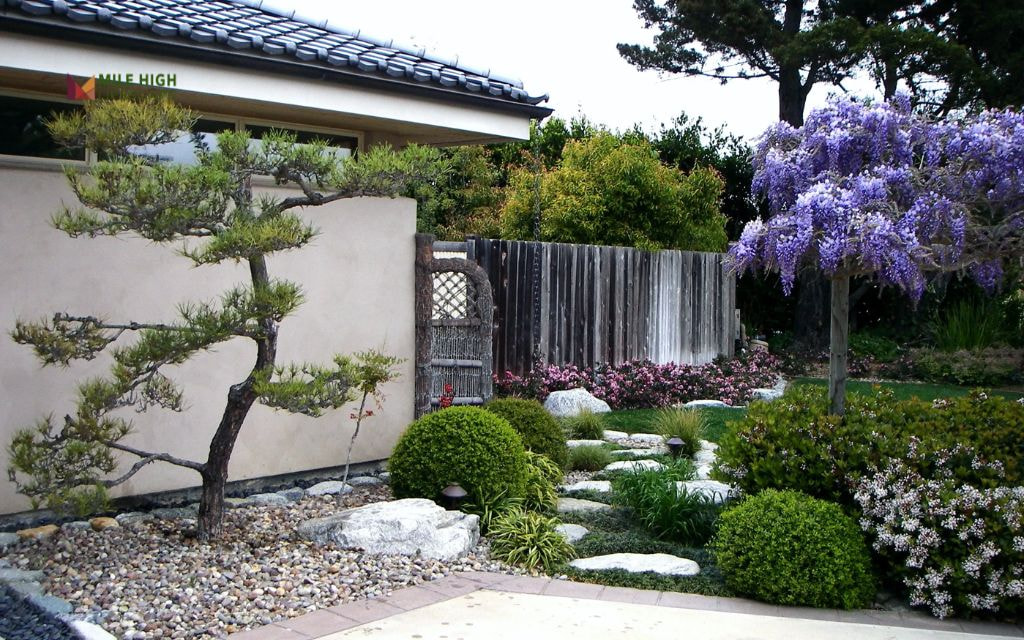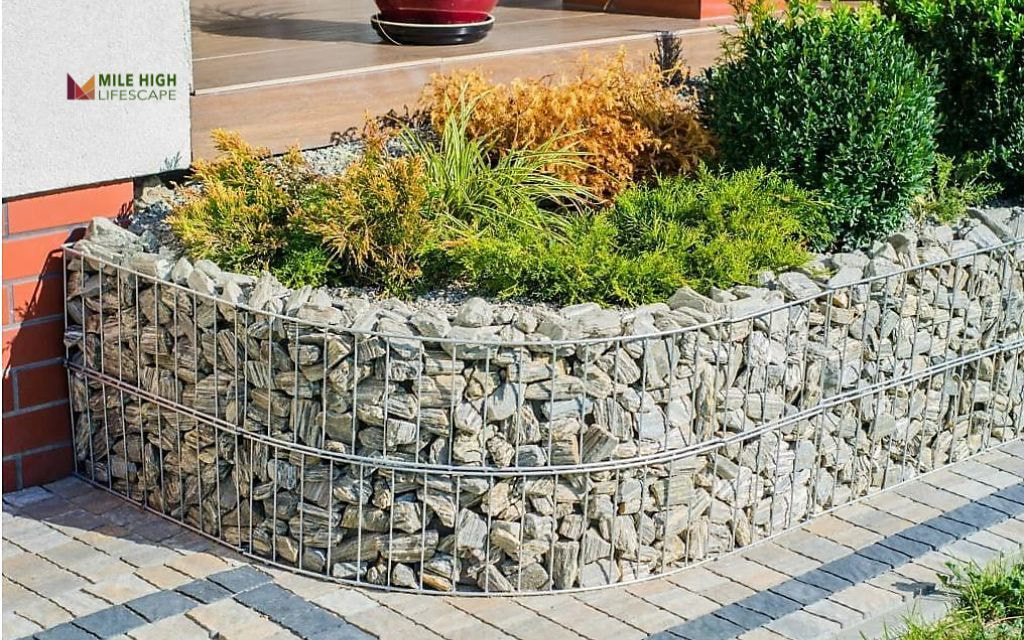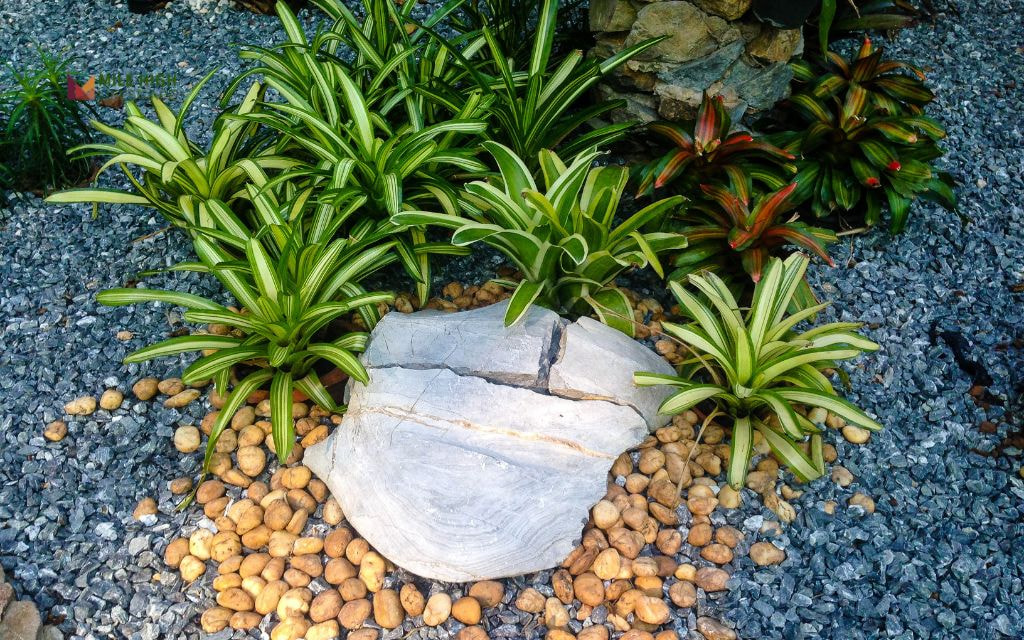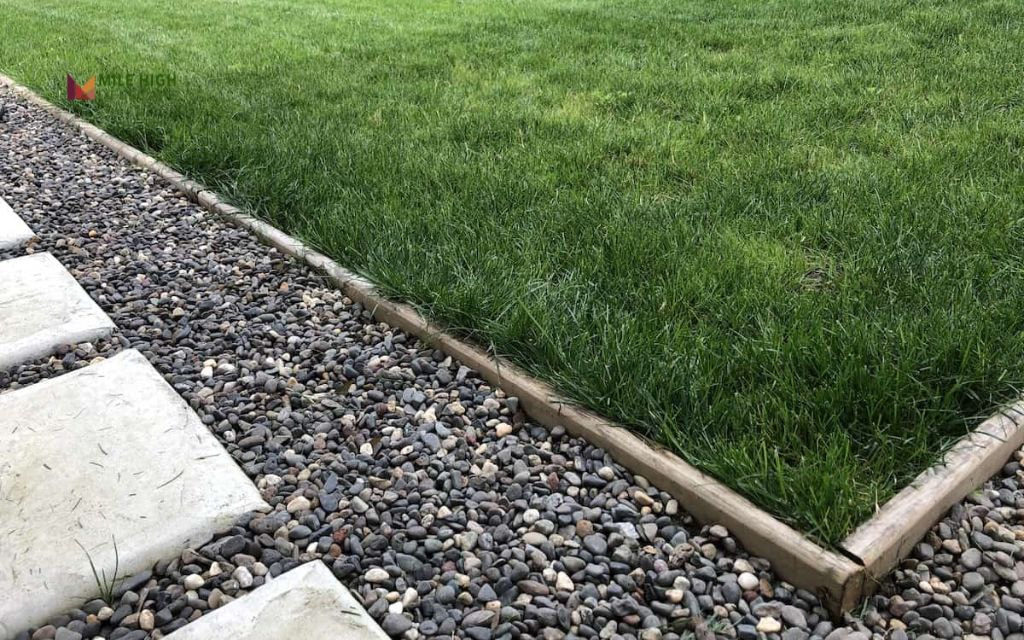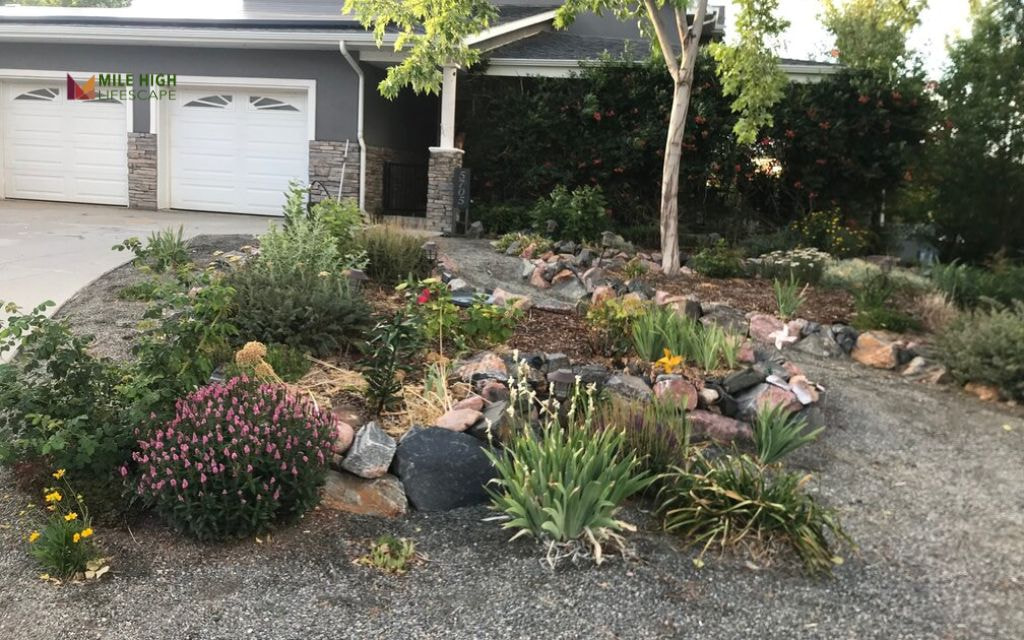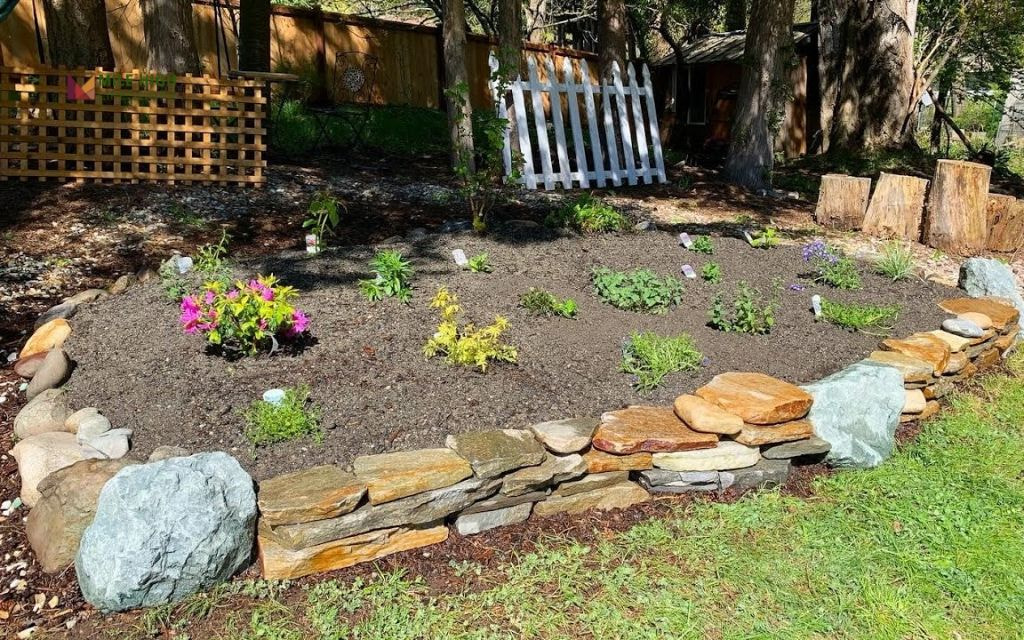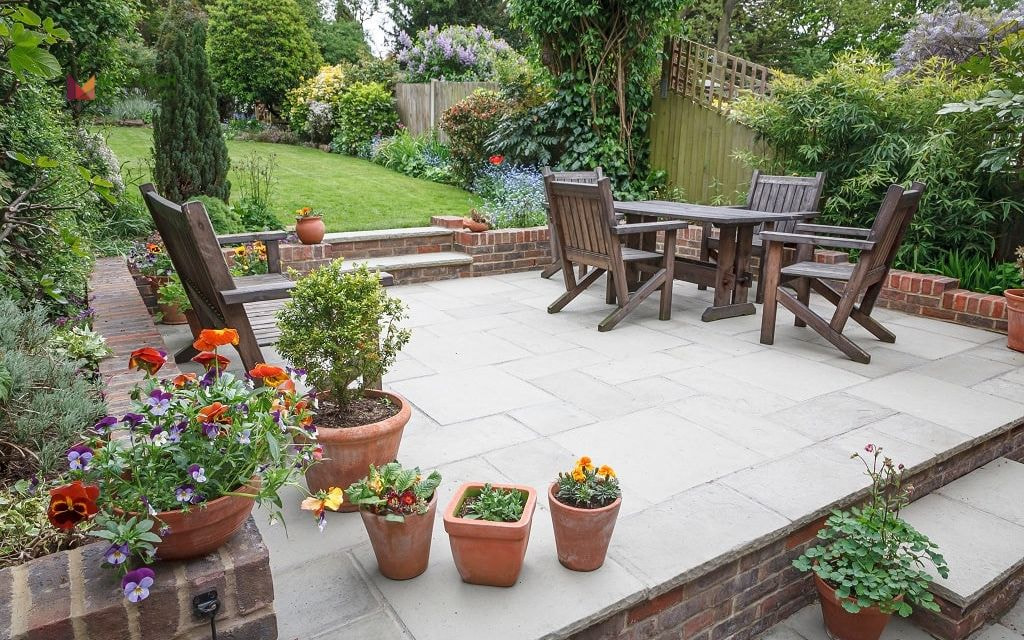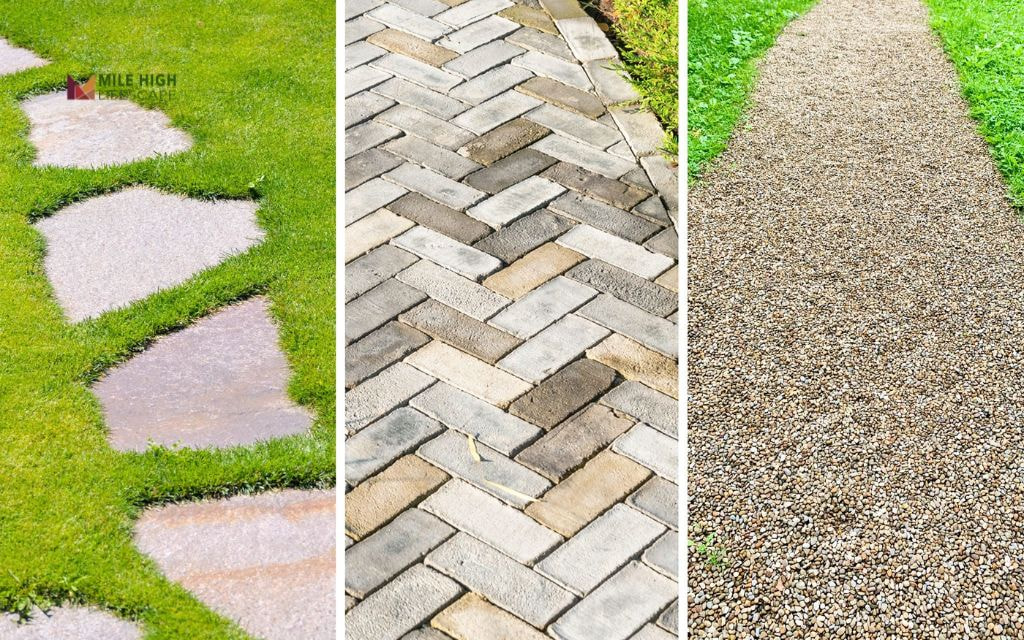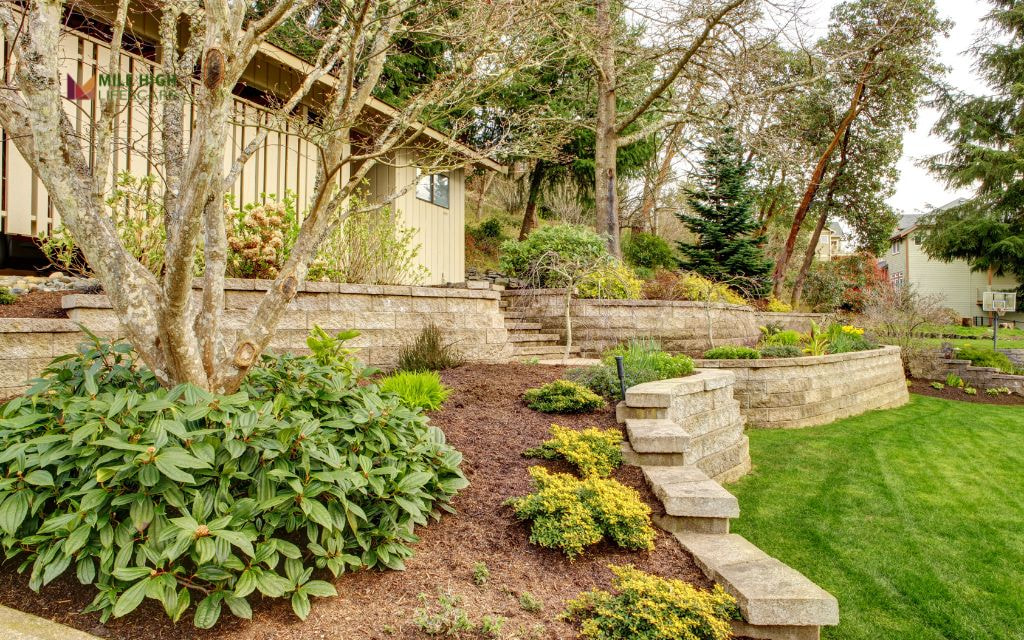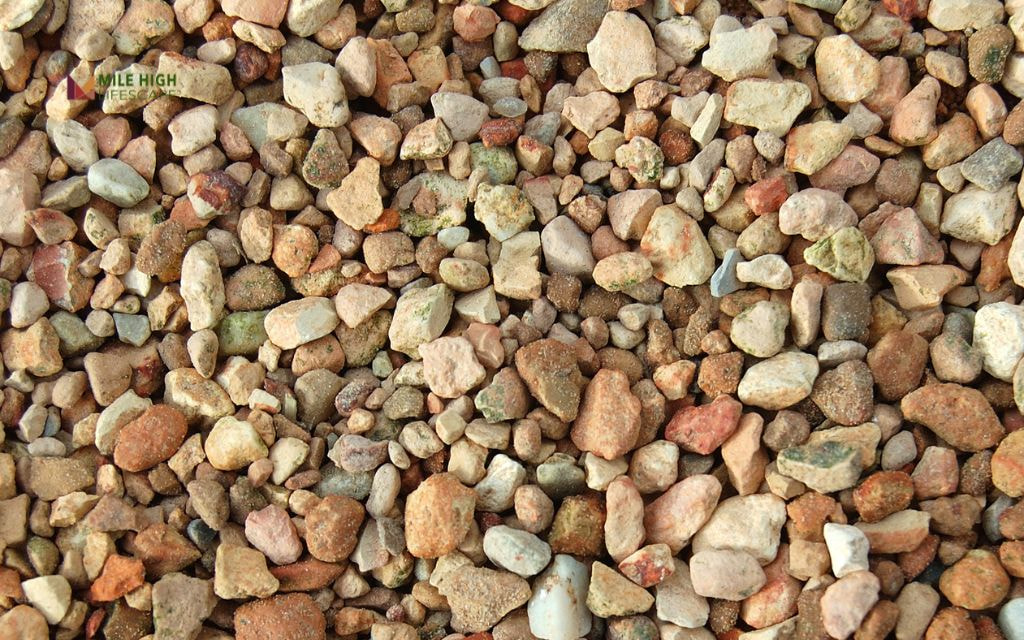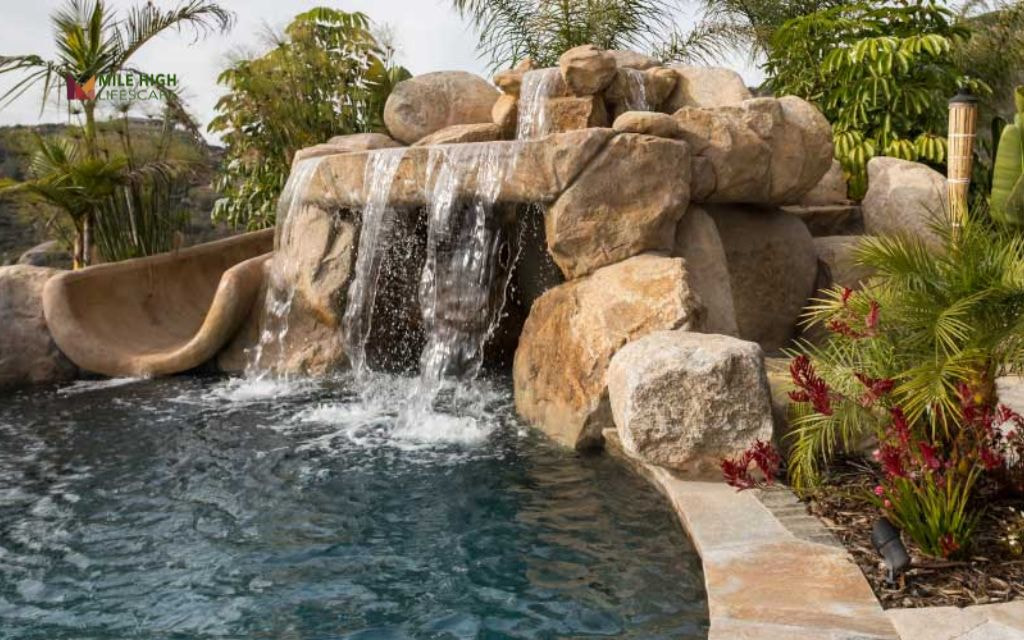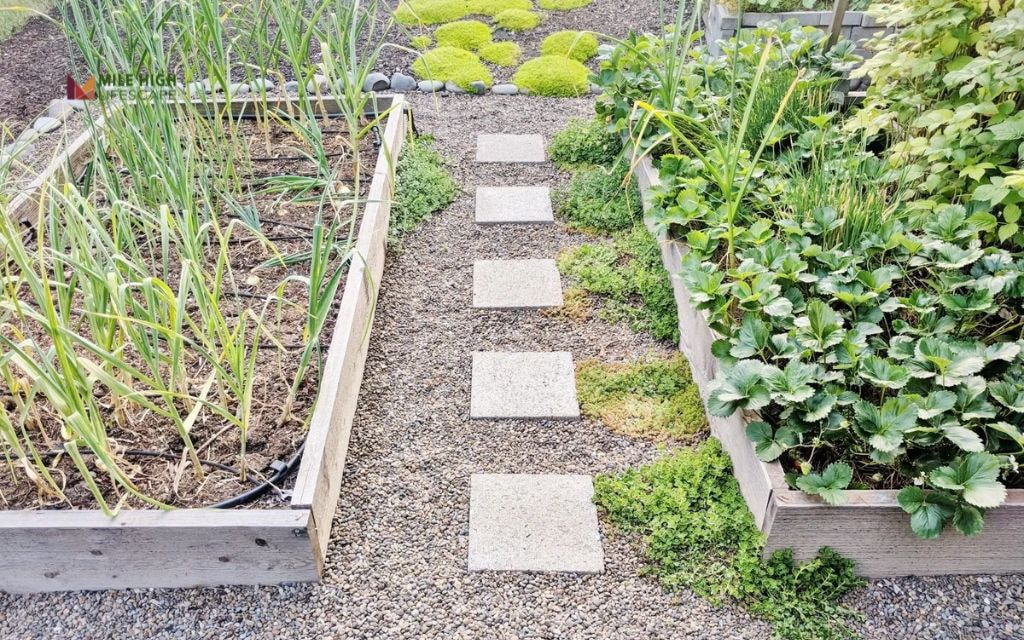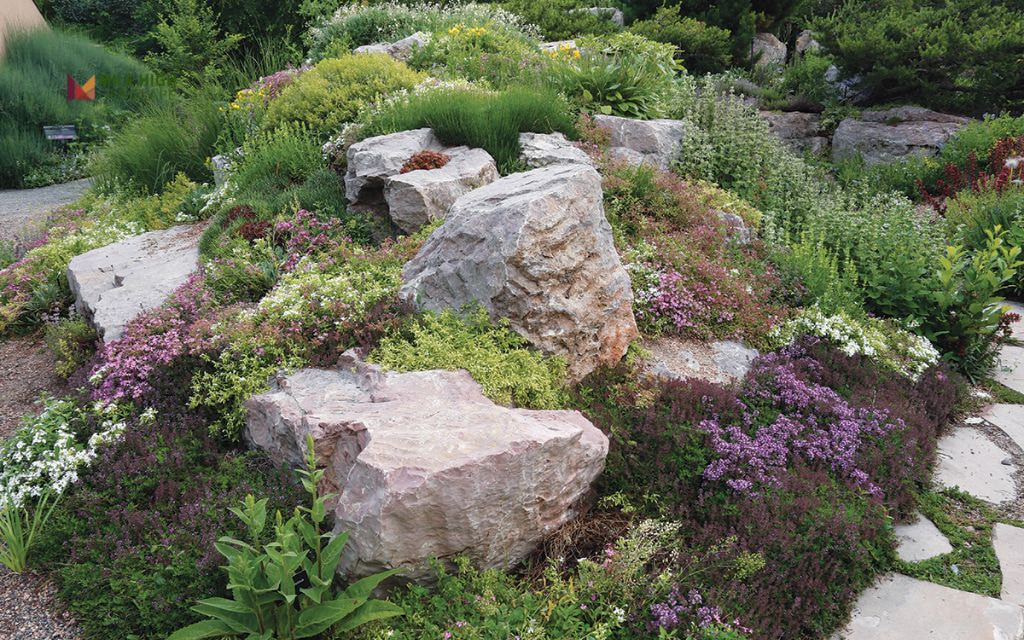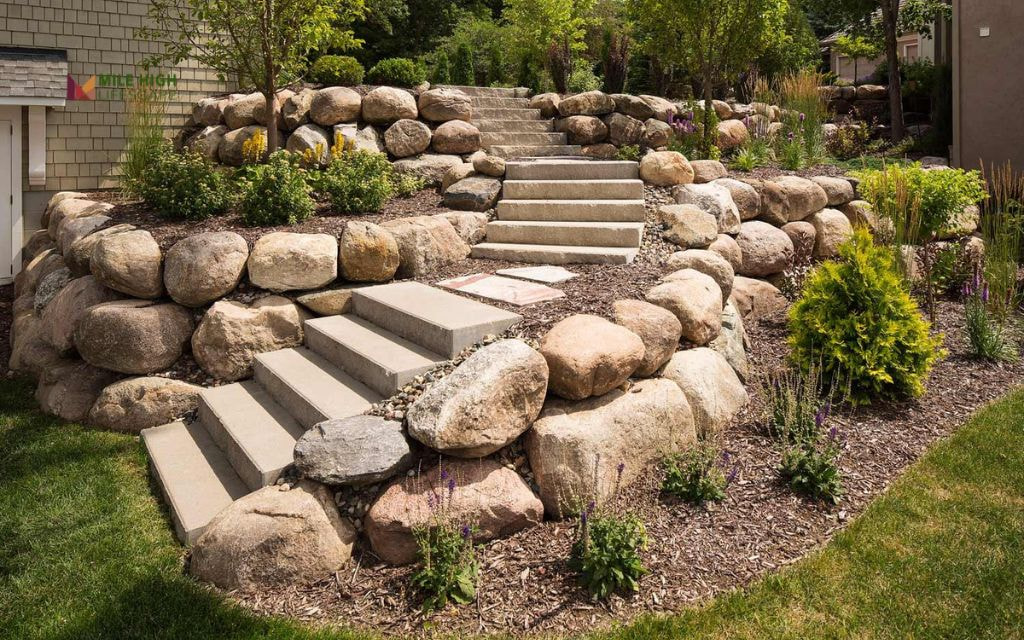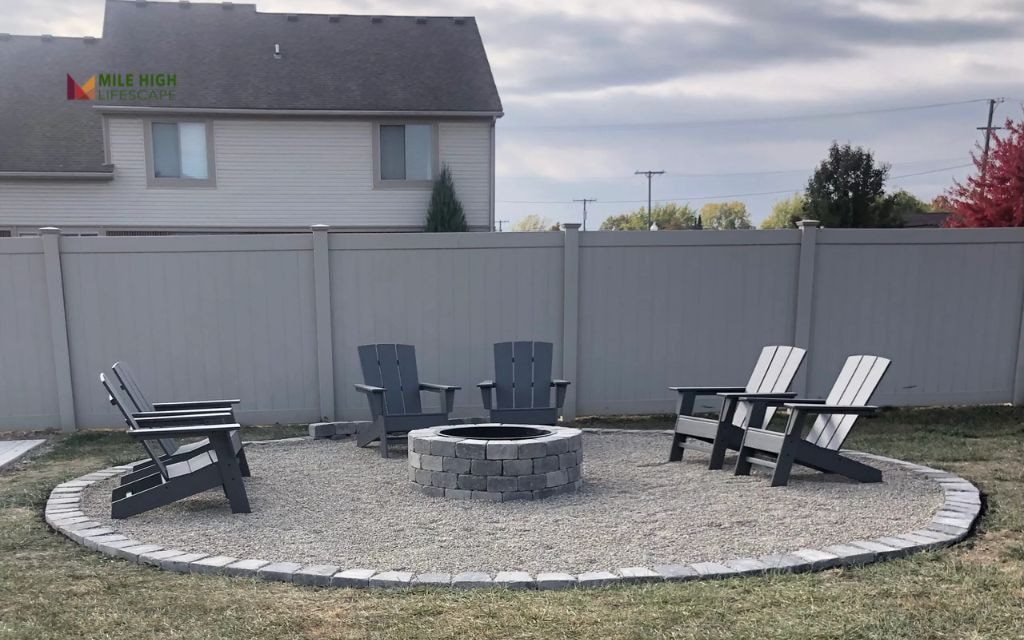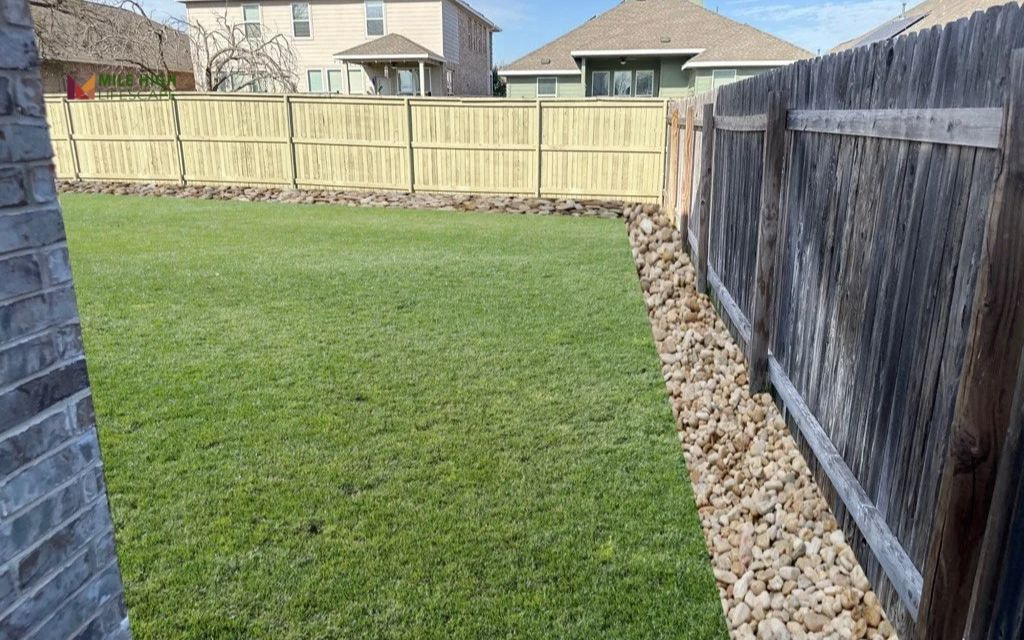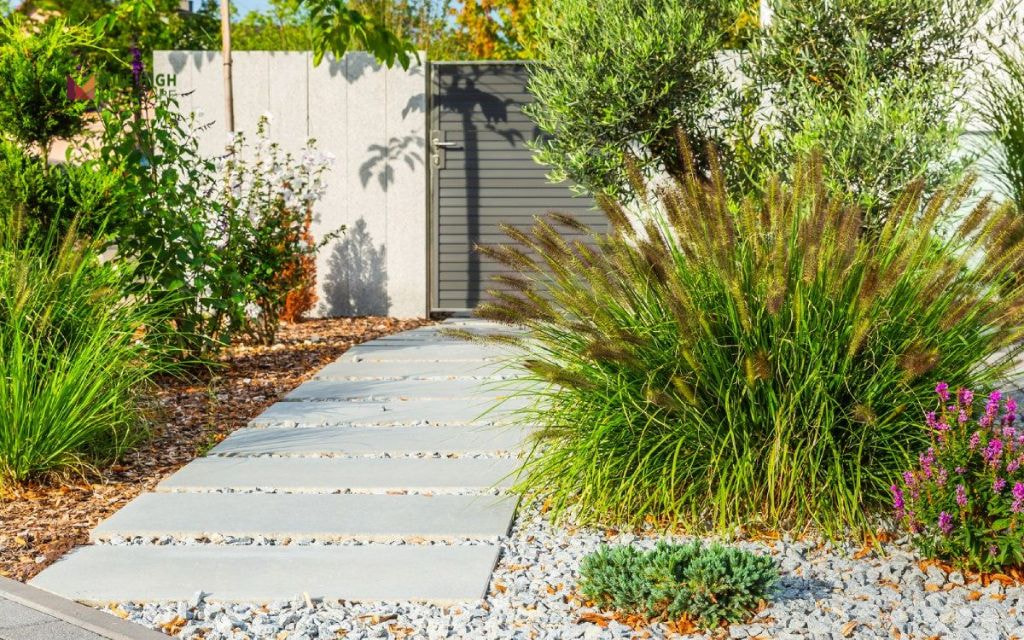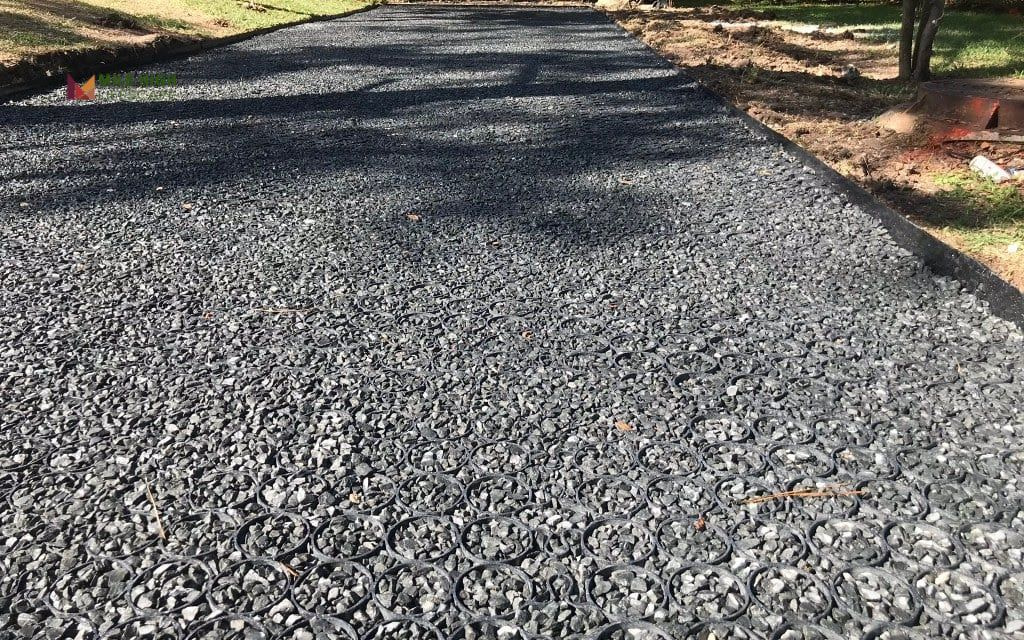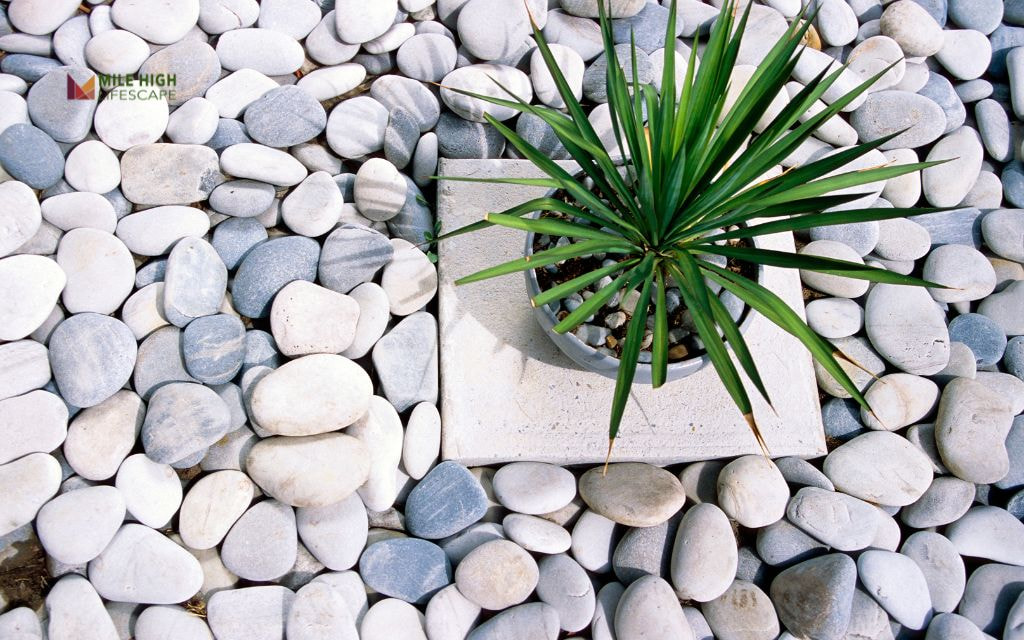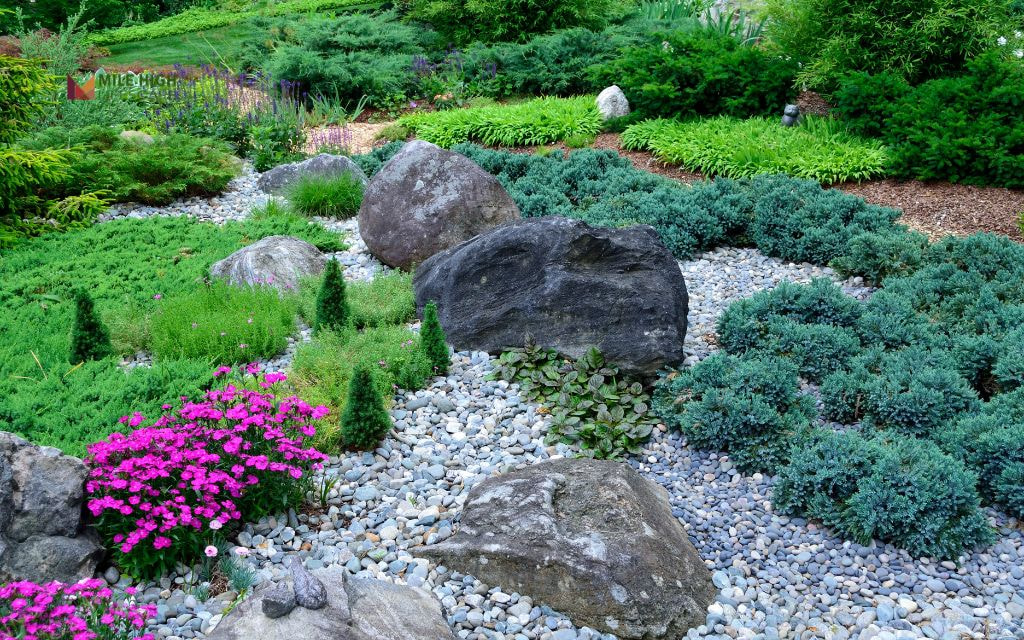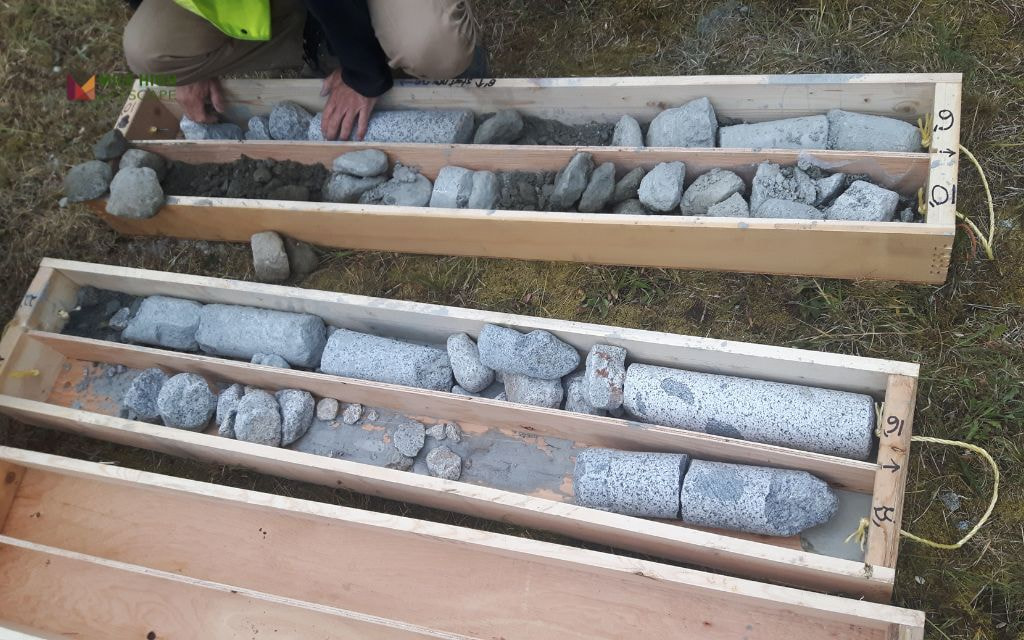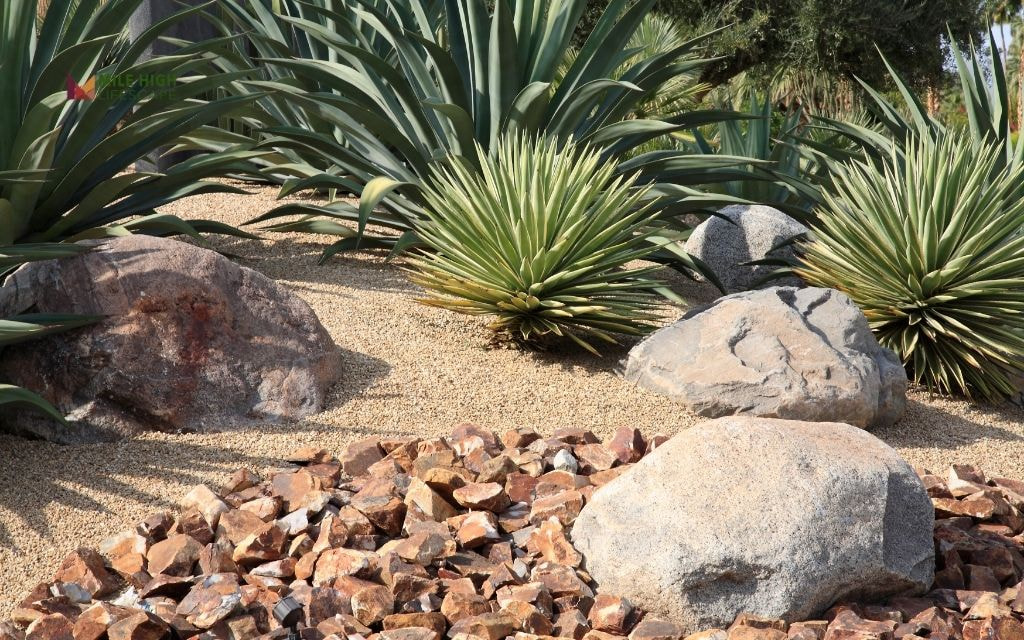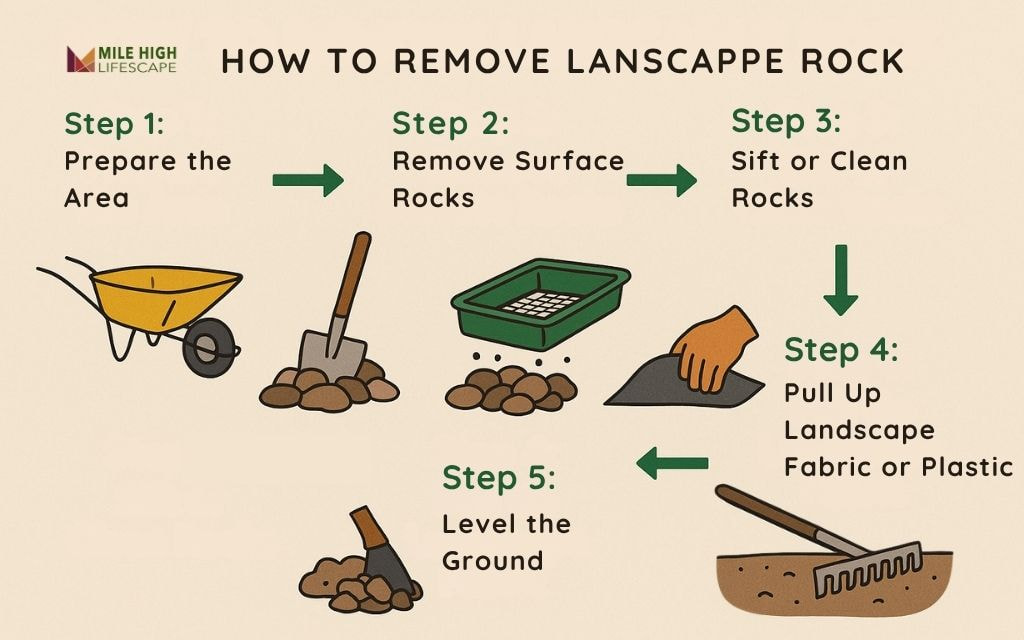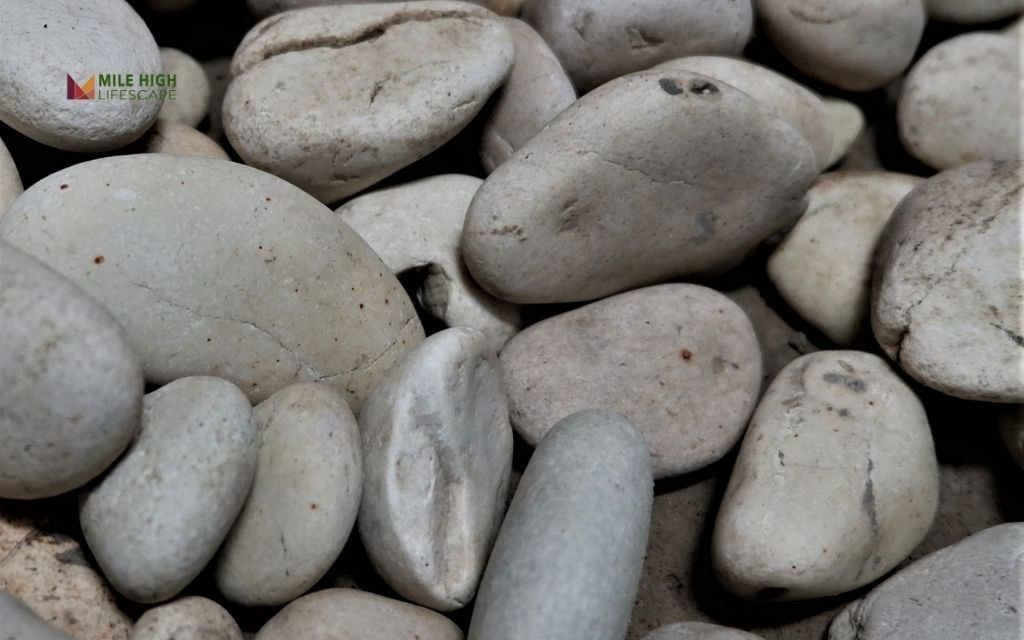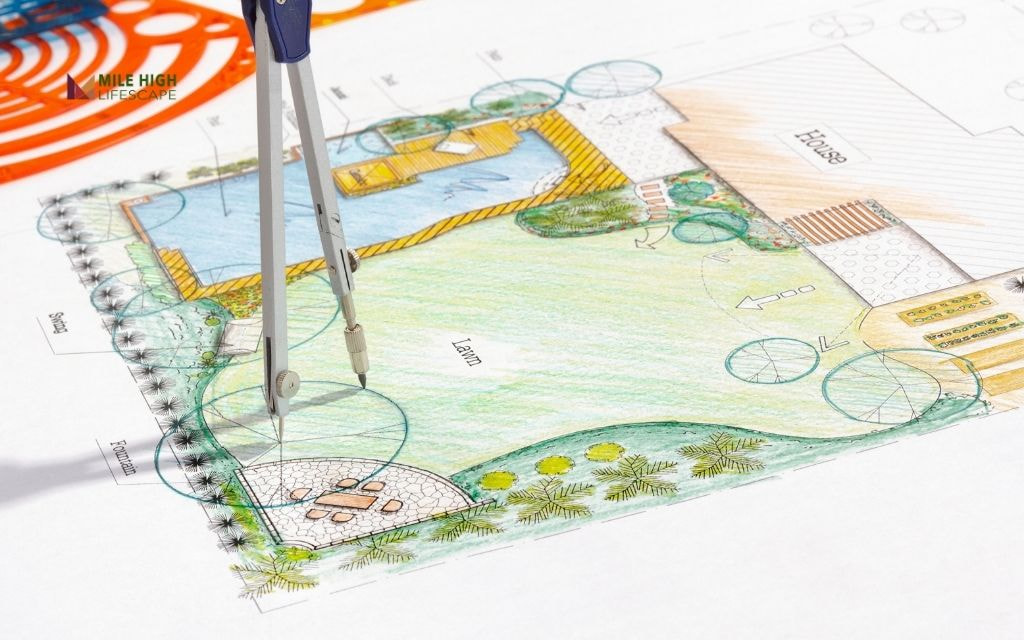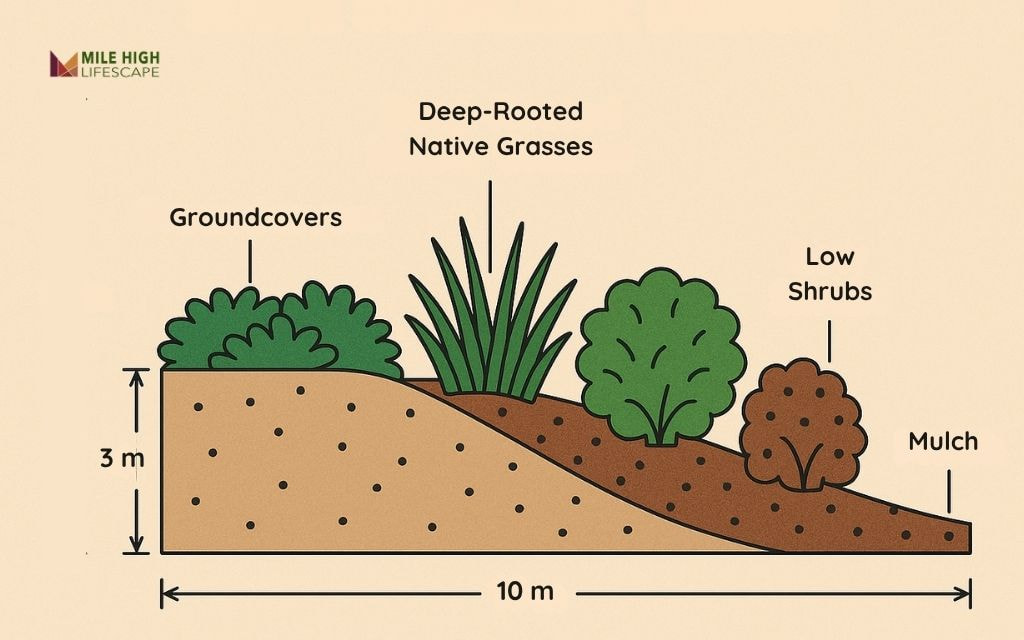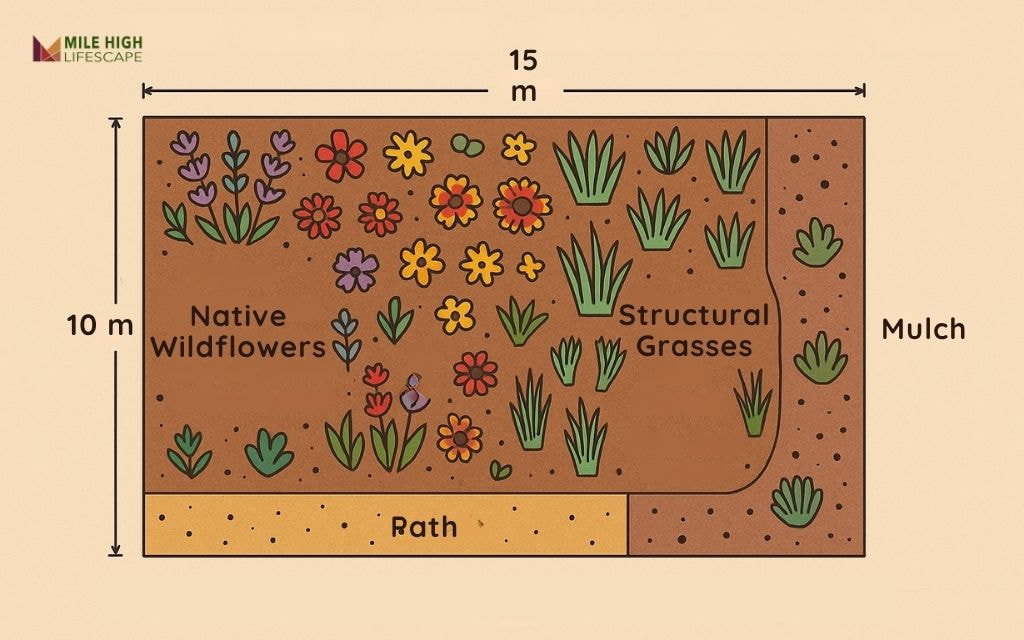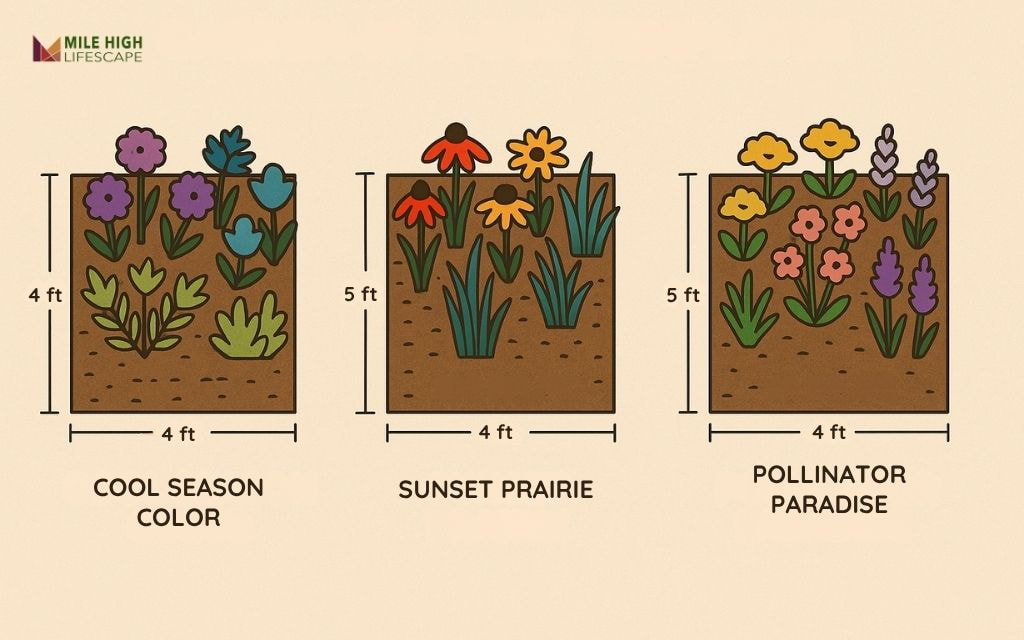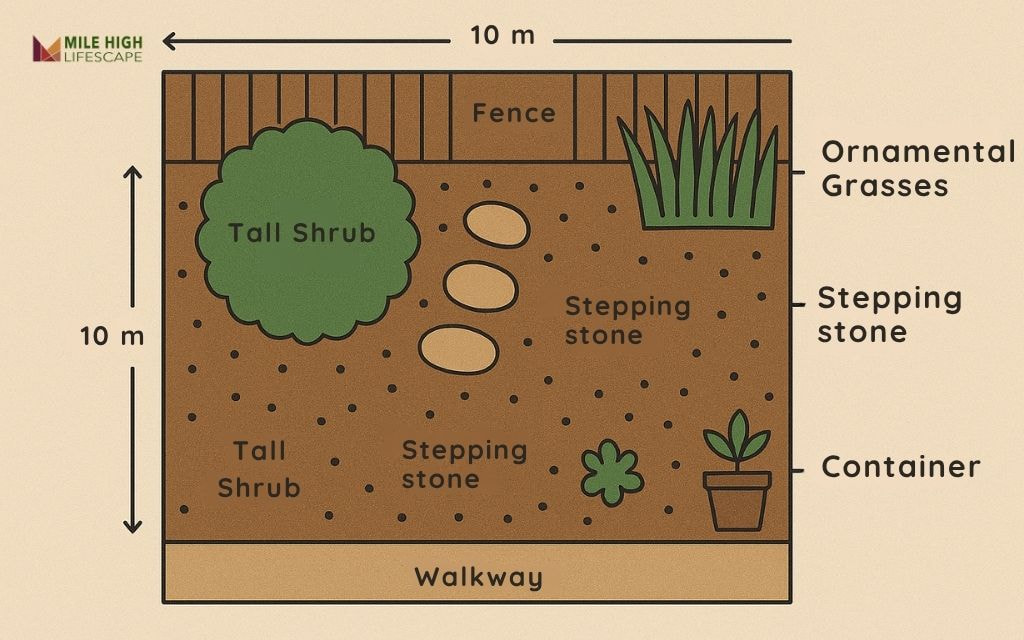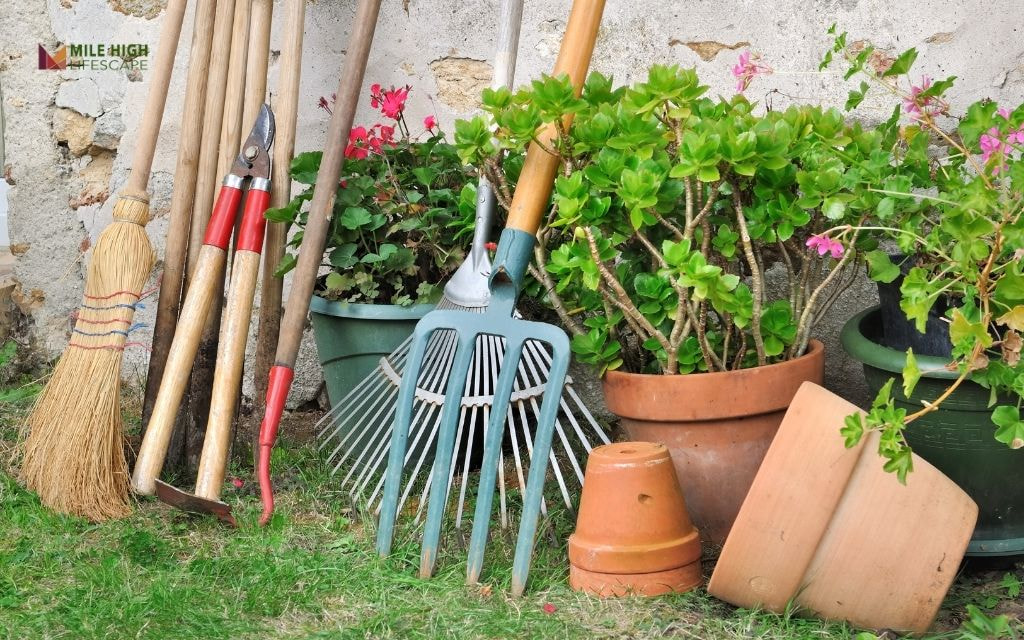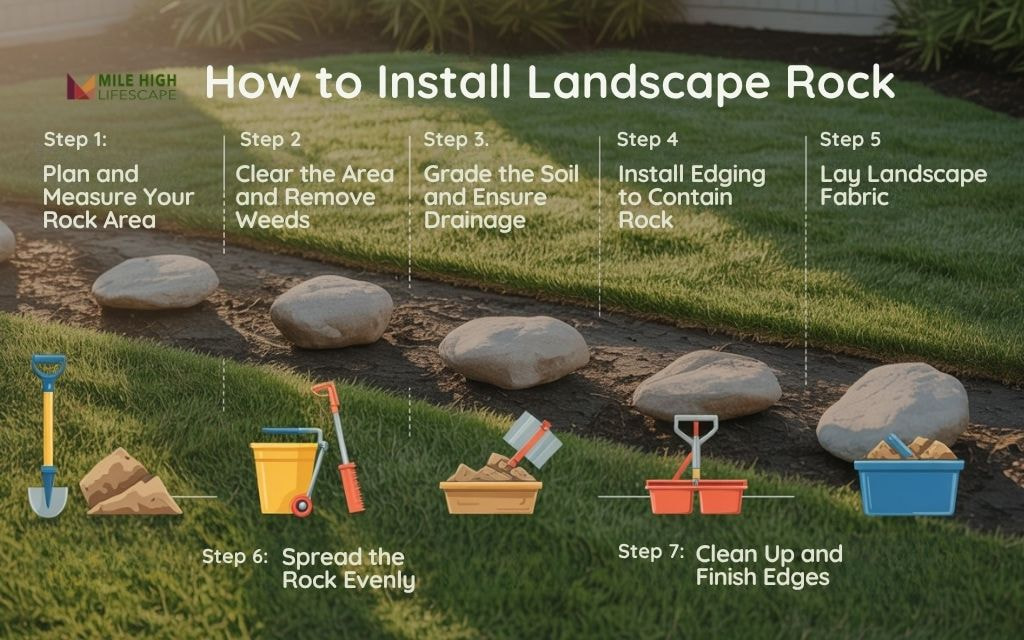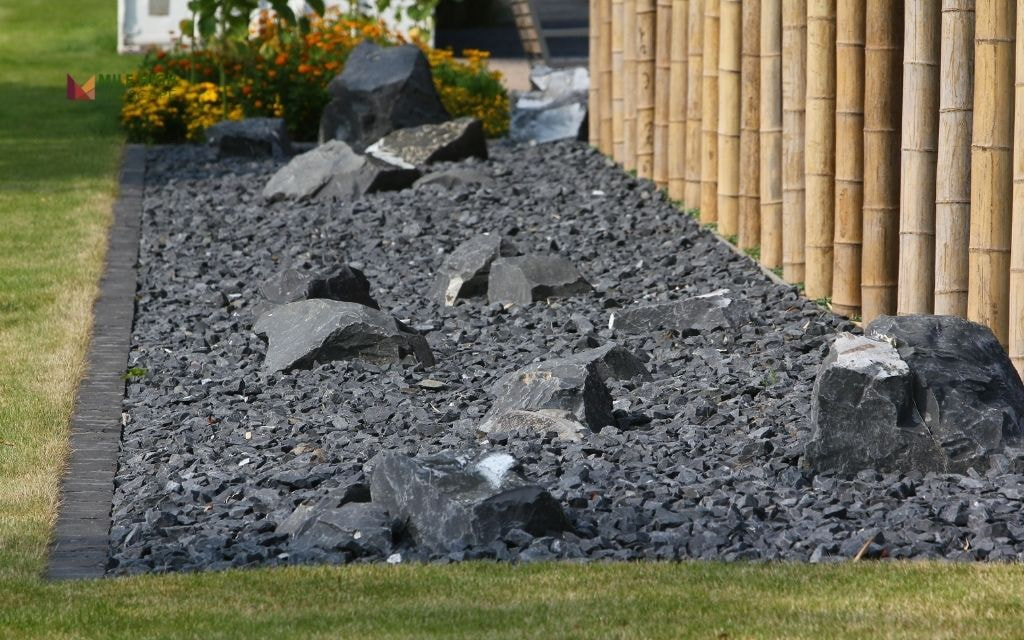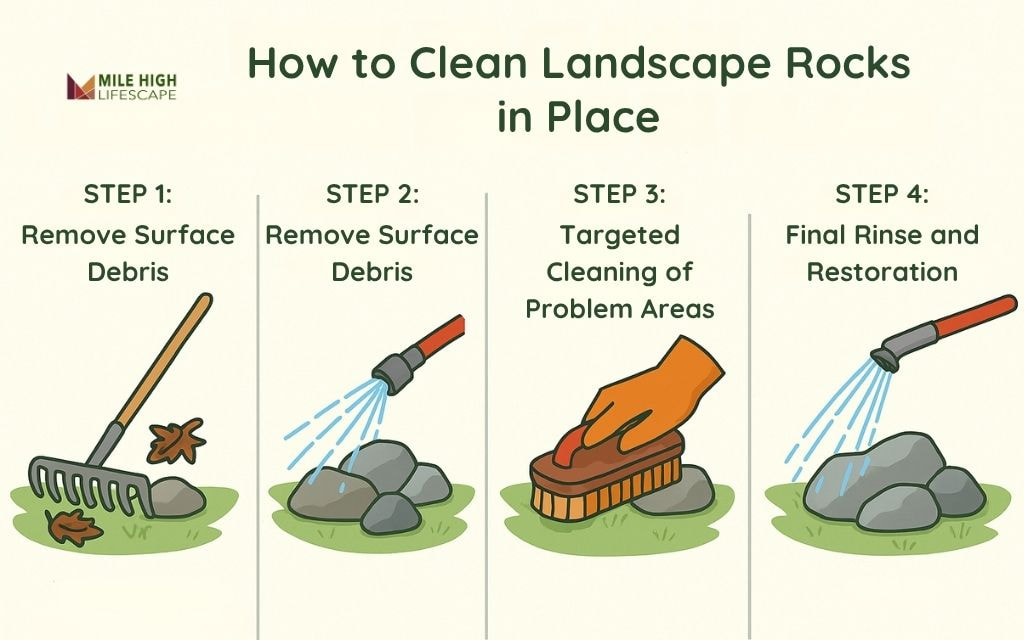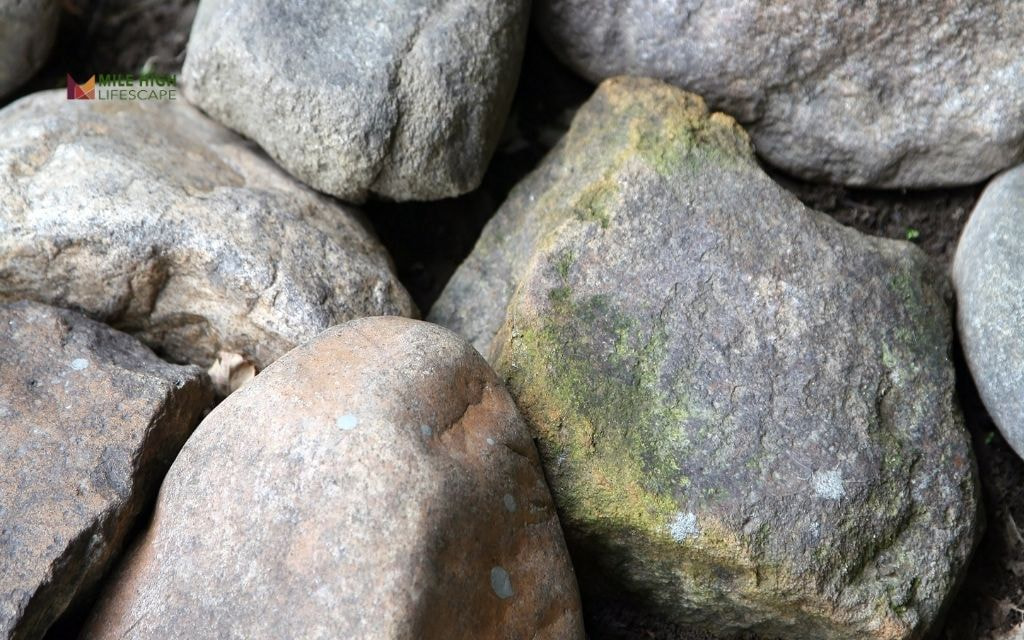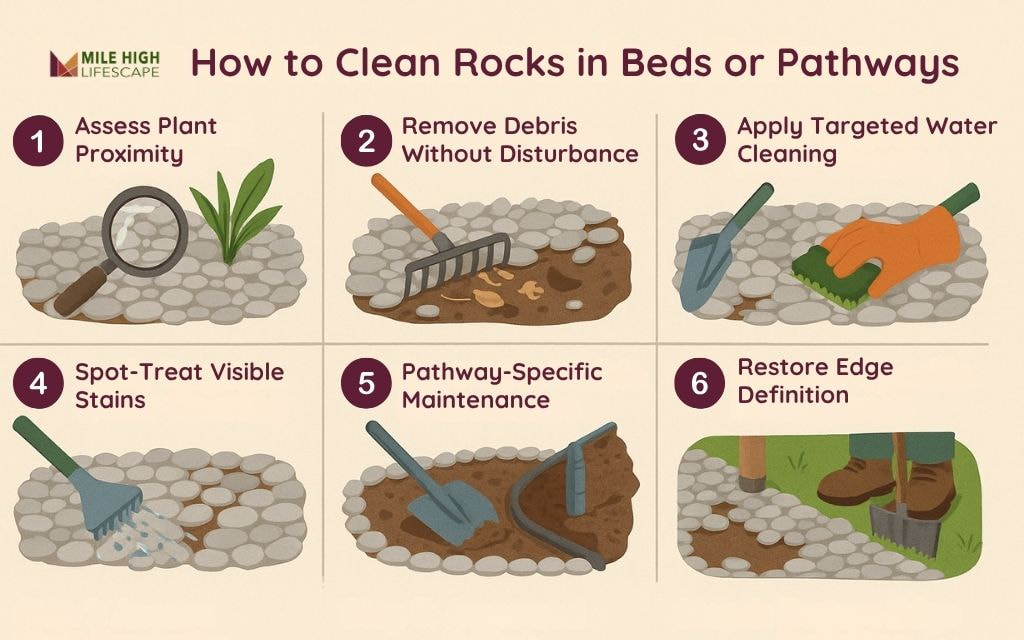The shift toward rock and mulch landscaping ideas represents more than just a trend; it’s a smart adaptation to Denver’s unique environmental demands.
Traditional bark mulch, while attractive, often struggles against Colorado’s relentless sun and wind, requiring frequent replacement and constant maintenance. Rock mulch, however, offers durability and fire resistance while creating stunning visual contrasts when paired thoughtfully with organic mulch in designated areas.
Whether you’re planning front yard rock mulch landscaping ideas or reimagining your backyard oasis, these 10 creative approaches will help you design a landscape that you dream of.

#1: Curved Gravel Beds with Native Perennials
This rock mulch landscaping approach works well with drought-tolerant perennials like yarrow, penstemon, and blanket flower. The smooth stones provide excellent drainage while suppressing weeds, and their neutral tones allow your colorful native blooms to take center stage.
Design the curved gravel beds to follow your yard’s natural contours, creating visual flow that guides the eye through your landscape.
Use a quality landscape fabric beneath the gravel to prevent weeds while allowing water penetration. The 3/8-inch pea gravel size works best for this application.

#2: River Rock Borders Around Foundation Beds
Create striking definition around your home’s foundation using 3-5 inch river rocks as borders, with decorative mulch filling the interior planting areas.
This landscaping idea with mulch and rocks offers the perfect balance of fire safety and plant health – the river rock creates a non-flammable barrier near your home’s structure while the central mulch zones provide moisture retention for your plantings.
Choose river rocks in complementary earth tones that harmonize with your home’s exterior colors. Within the mulched centers, plant low-water shrubs like juniper, barberry, or native grasses that thrive in Denver’s climate.
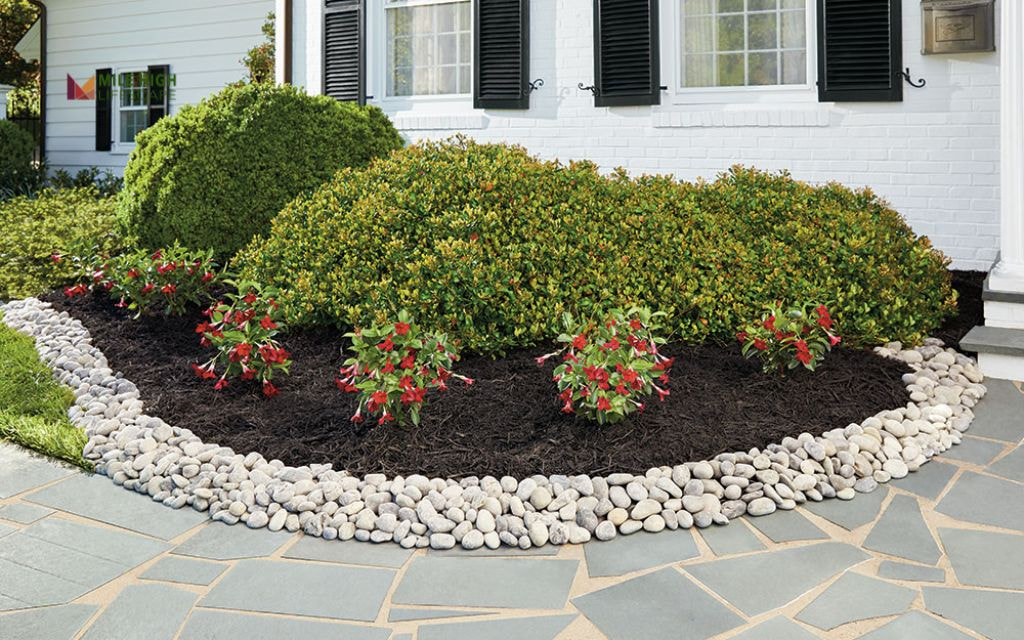
#3: Mulch-to-Rock Transitions for Slope Control
Implement a graduated system using larger crushed granite or decomposed granite on steeper areas, transitioning to smaller rock mulch on gentler slopes, with organic mulch reserved for flat planting areas.
This rock and mulch landscaping strategy prevents soil erosion and creates interesting textural transitions throughout your yard. Anchor the system with placed boulders that serve as both erosion barriers and focal points.
Plant drought-tolerant groundcovers like creeping phlox or sedum between the rocks to add color and further stabilize the soil.
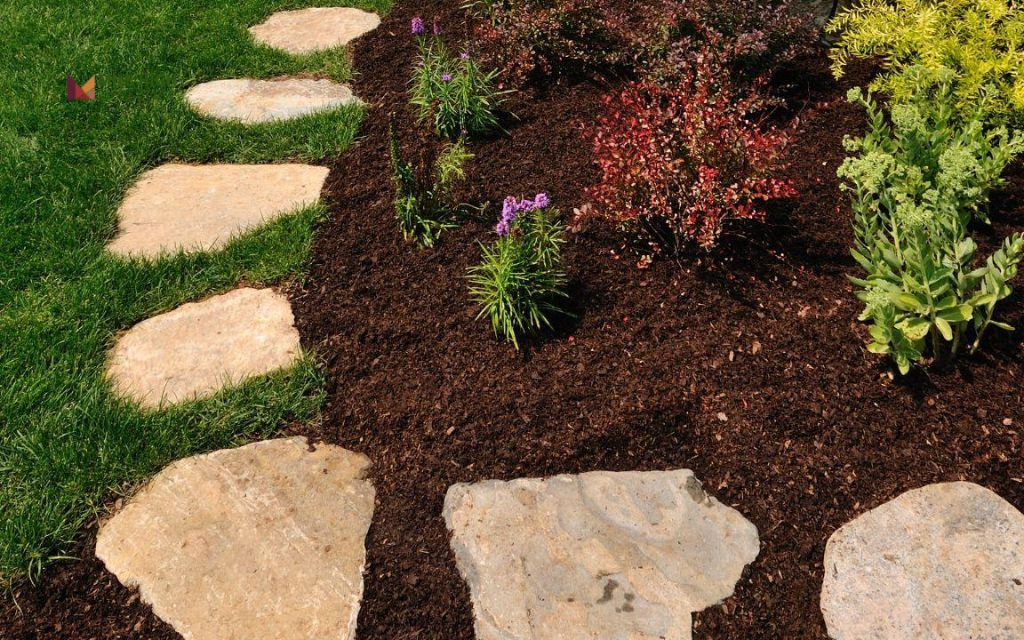
#4: Rock Mulch Under Trees with Mulch Accent Rings
Maximize fire safety and minimize maintenance by installing rock mulch in the majority of your tree’s root zone. This approach addresses Denver’s wildfire concerns and helps your trees receive adequate organic matter near their base.
Use lava rock or decomposed granite for the main mulched area, extending to the tree’s drip line. Create a 3-4 foot diameter ring of quality bark mulch immediately around the trunk, which provides essential organic nutrients.
This rock and mulch landscape idea works particularly well with established shade trees like maples, oaks, or evergreens.

#5: Dry Creek Bed with Mixed Rock Sizes and Mulch Edges
Design a naturalistic dry creek bed using various sizes of river rock and granite, bordered by mulched planting areas that simulate the vegetation found along Colorado’s mountain streams.
This landscaping idea with rocks and mulch serves both aesthetic and practical purposes, managing water runoff while creating a stunning focal point.
Begin with larger boulders (12-18 inches) to define the creek bed’s banks, fill the center with medium river rock (2-4 inches), and use smaller pea gravel for realistic detail.
Plant the mulched edges with native sedges, ornamental grasses, and moisture-loving perennials that would naturally occur near water sources.

#6: Flagstone Paths with Gravel Fill and Mulch Plant Pockets
Create elegant walkways using large flagstone stepping stones with clean gravel fill, punctuated by mulch-filled plant pockets that soften the hardships.
This sophisticated approach to mulch and rock landscaping ideas provides both functionality and beauty while addressing Denver’s need for low-water landscaping solutions.
Select Colorado buff or red sandstone flagstones for authentic regional character, spacing them naturally for comfortable walking. Fill the gaps with 3/8-inch crushed granite or pea gravel, and create irregular plant pockets filled with quality mulch.
These pockets can accommodate small ornamental grasses, succulents, or native wildflowers that add seasonal color without requiring extensive irrigation.
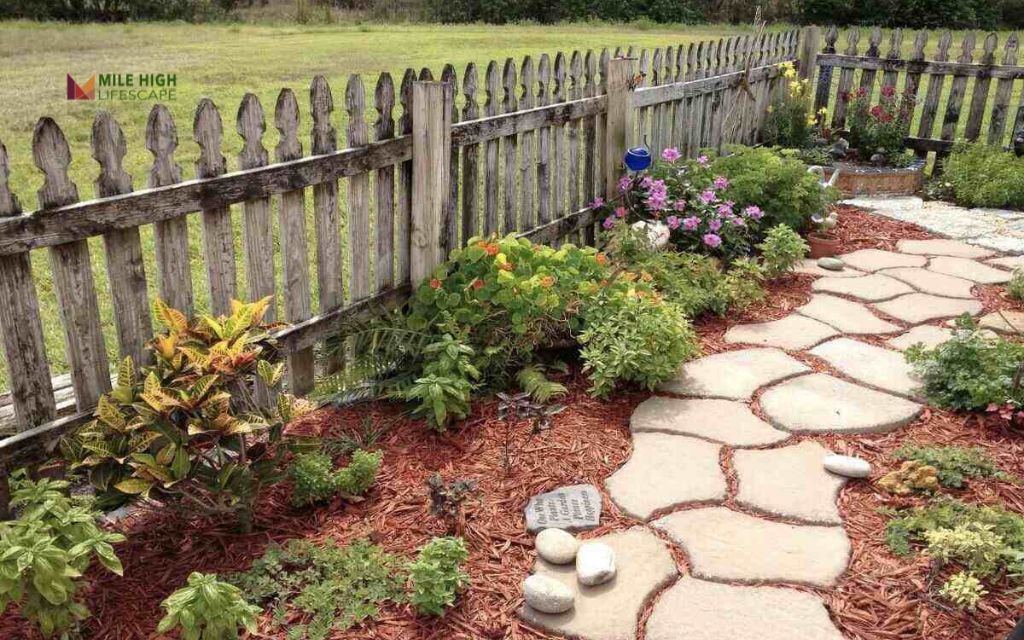
#7: Front Yard Island Bed
Design a show-stopping front yard landscaping feature using large specimen boulders as anchor points, surrounded by zones of contrasting mulch and decorative rock.
Position 2-3 large boulders (3-5 feet in diameter) asymmetrically within your island bed, then create flowing zones of different materials around them. Use dark bark mulch near plantings that require moisture retention, medium-sized river rock in transition areas, and fine gravel or decomposed granite for pathways and accent areas.
Plant with architectural specimens like yucca, ornamental grasses, or dwarf conifers that complement the dramatic stone elements.
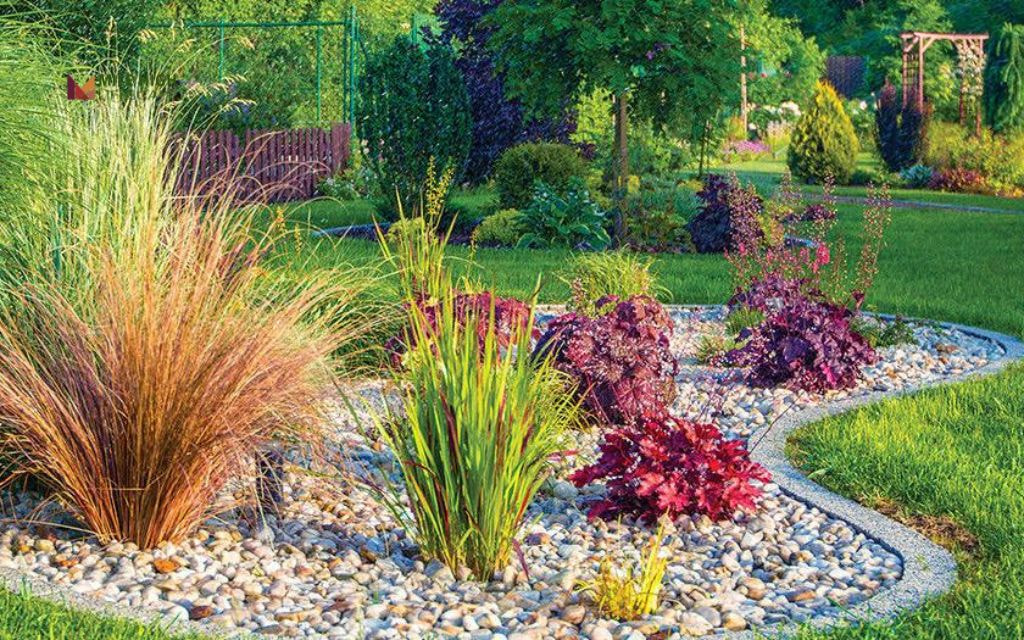
#8: Raised Rock Beds with Dark Bark Mulch
Construct raised planting beds using stacked flagstone or boulder retaining walls, filled with dark bark mulch that creates striking contrast against the lighter stone colors.
This rock and mulch landscaping approach works exceptionally well in Denver’s intense sunlight, where the interplay of light and shadow creates constantly changing visual interest.
Build the retaining walls using locally quarried stone, ensuring proper drainage through the wall base. Fill with premium bark mulch in rich brown or black tones, and plant with silver-green drought-tolerant specimens like artemisia, Russian sage, or blue fescue.
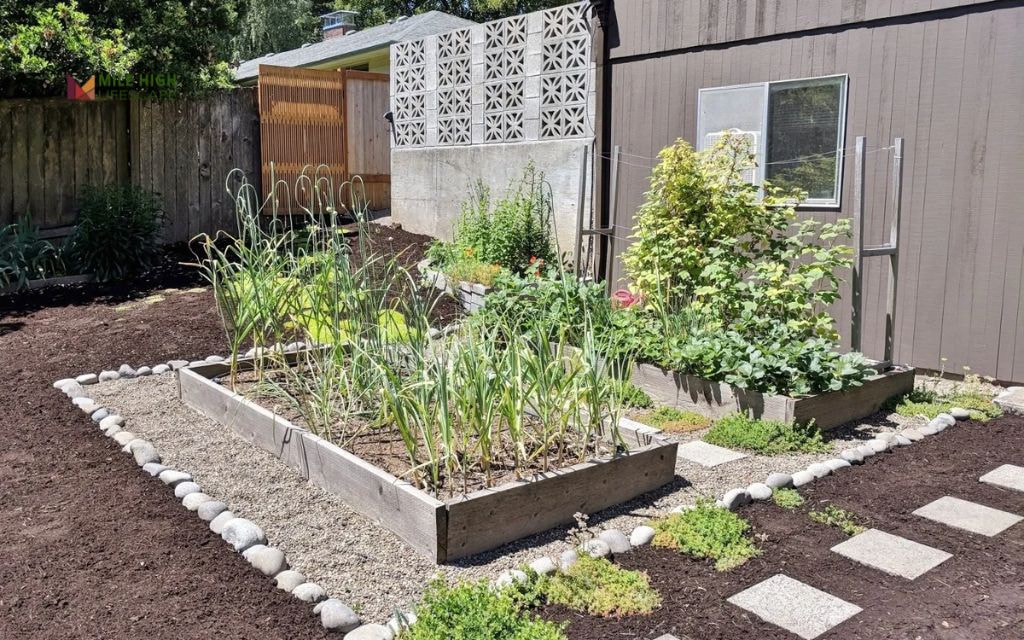
#9: Xeriscape Tree Ring Using Lava Rock and Native Grass
Create heat-insulated, low-water perimeters around existing trees using dark lava rock mulch, surrounded by rings of native buffalo grass or blue grama grass.
The dark lava rock absorbs heat during the day and releases it slowly at night, creating a beneficial microclimate for tree roots. Extend the rock mulch to cover the entire drip line area, then establish the grass ring beyond.
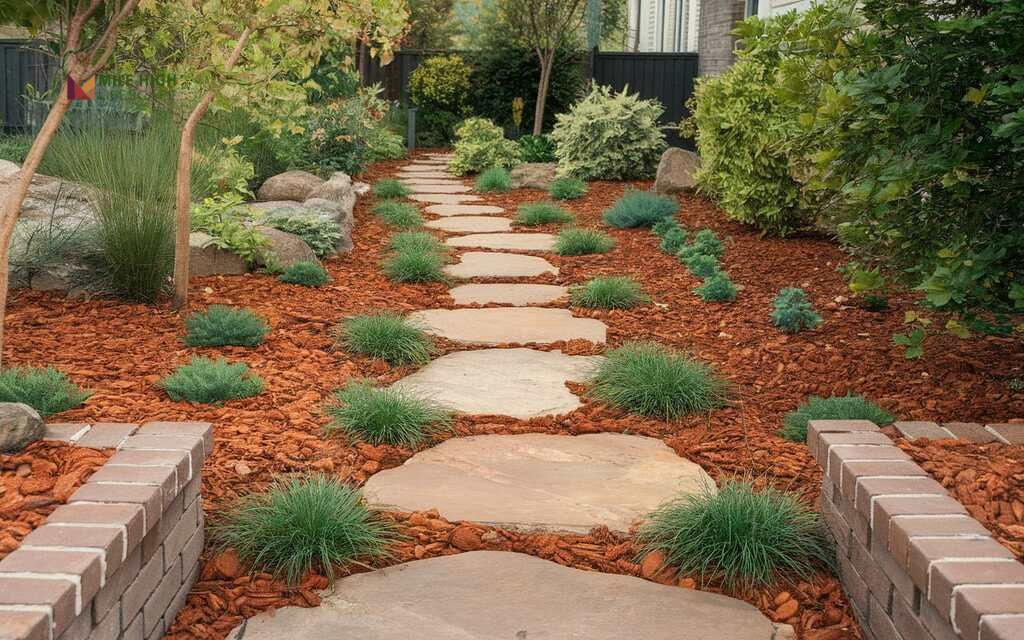
#10. Fire-Smart Perimeter Beds
Implement defensible space principles by creating gravel-only zones within five feet of your home’s structure, transitioning to mixed rock and mulch areas further away. This critical landscaping idea with mulch and rocks prioritizes fire safety while maintaining attractive curb appeal.
Use clean, angular gravel or decomposed granite in the immediate home perimeter, selecting light colors that won’t absorb excessive heat.
Transition to mixed rock and mulch zones beginning at least five feet from structures, where you can safely incorporate organic materials and more diverse plantings.

What Is Rock Mulch? How It Differs From Wood Mulch
What Is Rock Mulch?
Rock mulch is simply crushed stone, gravel, or decorative rocks used to cover soil instead of organic materials like bark or wood chips. It serves the same basic purpose as traditional mulch – covering bare soil – but with completely different characteristics and benefits.
Rock Mulch vs. Wood Mulch
| Feature | Rock Mulch | Wood Mulch |
| Lifespan | Permanent – lasts decades without replacement | 1-2 years before decomposing and needing replacement |
| Water Management | Promotes drainage – water flows through quickly | Retains moisture – acts like a sponge for plants |
| Fire Safety | Completely fireproof – creates defensible space | Highly flammable – banned near structures in fire zones |
| Maintenance | Virtually none – occasional weeding only | High – annual replacement and regular refreshing |
| Cost Over Time | Higher upfront, no ongoing costs | Lower upfront, continuous replacement costs |
| Plant Benefits | Best for drought-tolerant plants | Ideal for moisture-loving plants |
Rock Mulch Landscaping Ideas: Tips For Choosing Right Materials That Work
Design Guidelines
- Create contrast: Pair smooth river rocks with coarse bark mulch, or fine gravel with chunky wood chips
- Use proper edging: Install steel edging or stone borders to keep materials separate and prevent mixing
- Plan color combinations: Light-colored rocks make dark mulch pop, while neutral stones complement any mulch color
Fire Safety Rules
- 5-foot rule: Use only rock mulch within 5 feet of your home’s structure
- Avoid heat traps: Don’t place organic mulch near south-facing walls or mechanical equipment
- Create defensible zones: Use rock mulch around fire-prone areas like outdoor kitchens or fire pits
Material Placement Strategy
- Rock for drainage: Use rock mulch where water needs to flow away quickly (slopes, walkways)
- Mulch for plants: Use organic mulch around trees and shrubs that need moisture retention
- Transition zones: Create gradual changes between different materials for natural appearance
Installation Best Practices
- Install landscape fabric: Place quality fabric under rock areas to prevent weeds (avoid plastic)
- Prepare soil properly: Add drainage amendments under rock, compost under mulch
- Plan for maintenance: Keep materials easily accessible for future additions or adjustments
Conclusion
These 10 creative ideas help you tackle wind-blown mulch, drought conditions, and fire safety while creating beautiful, low-maintenance yards that thrive year-round.
Whether you’re starting with simple river rock borders or designing comprehensive xeriscape gardens, the key is matching the right materials to your specific needs. Rock mulch handles Denver’s tough conditions, while strategic mulch placement keeps your plants healthy and happy.
Ready to transform your landscape with decorative landscaping rocks near me? Mile High Lifescape can help you design and install solutions that work perfectly for Colorado’s environment.
Frequently Asked Questions (FAQs)
Does rock mulch get too hot in summer?
Yes, rock mulch retains heat. Choose lighter colors like river rock or buff limestone, and plant heat-tolerant species like sedum or ornamental grasses to minimize issues.
Can you mix rock and mulch in landscaping?
Absolutely. Use proper edging to keep materials separate, place rock mulch in permanent areas, and use organic mulch around plants that need moisture.
Should I use both rock and mulch in the same yard?
Yes, this combination works great. Use rock mulch for walkways and fire-safe zones, organic mulch for planting beds. Keep them clearly separated with edging.
Does rock mulch attract termites?
No, rock mulch doesn’t attract termites because it provides no food source and doesn’t create moisture. It’s actually better than wood mulch for termite prevention.
Should I put topsoil under mulch?
Yes for organic mulch areas where you’re planting. For rock mulch areas, focus on proper drainage rather than rich soil, since most rock-mulched plants prefer well-draining conditions.
